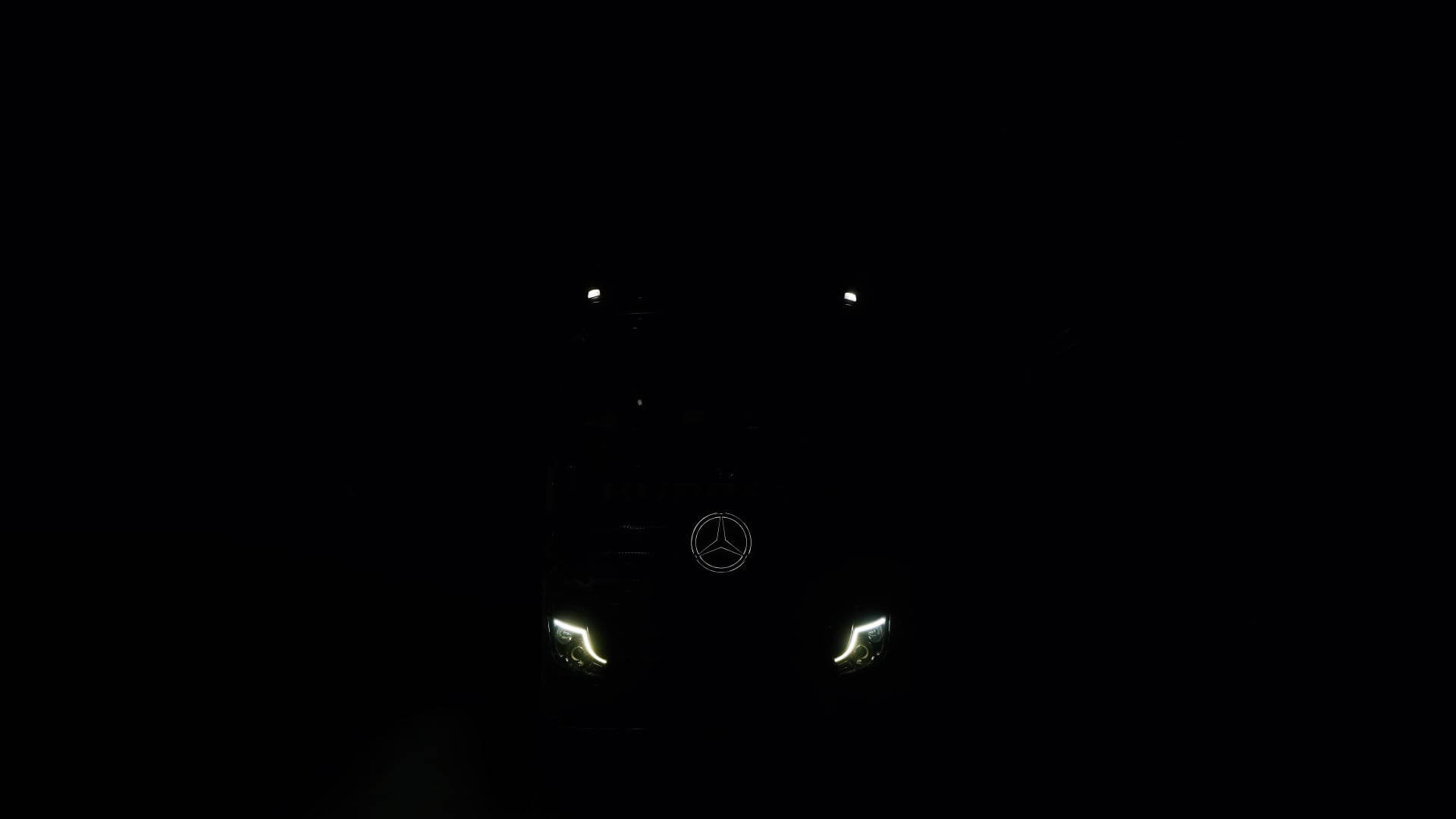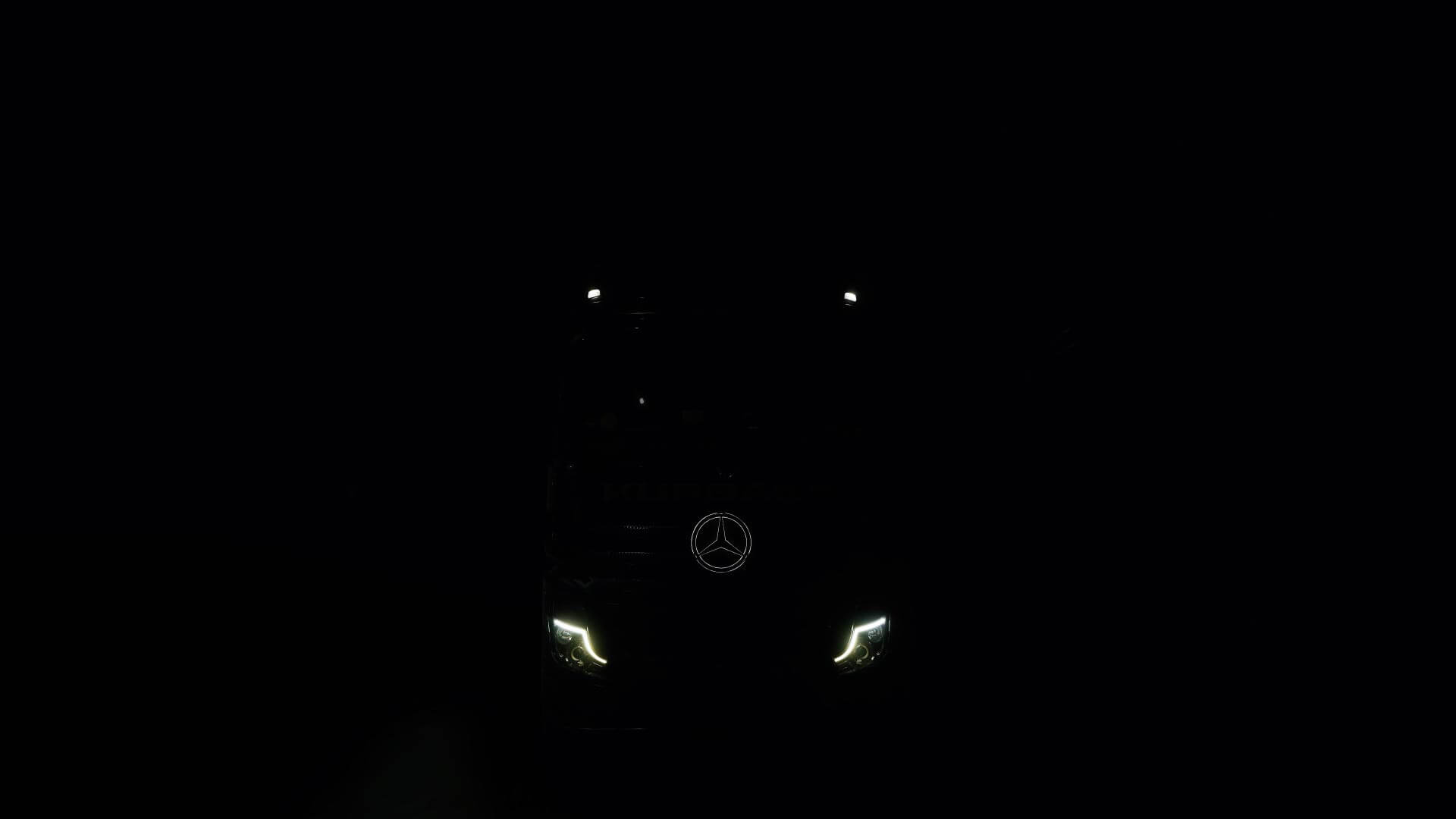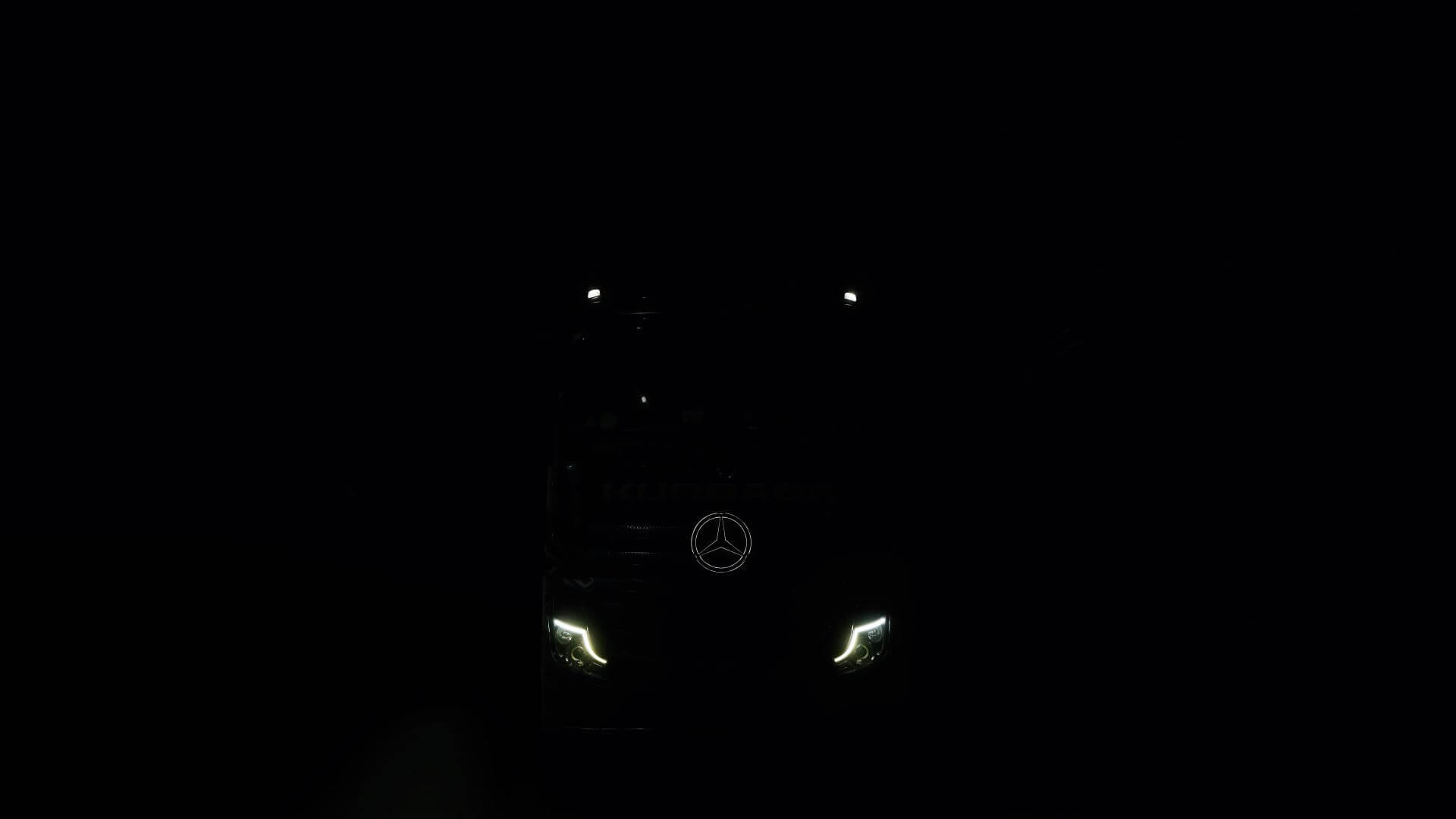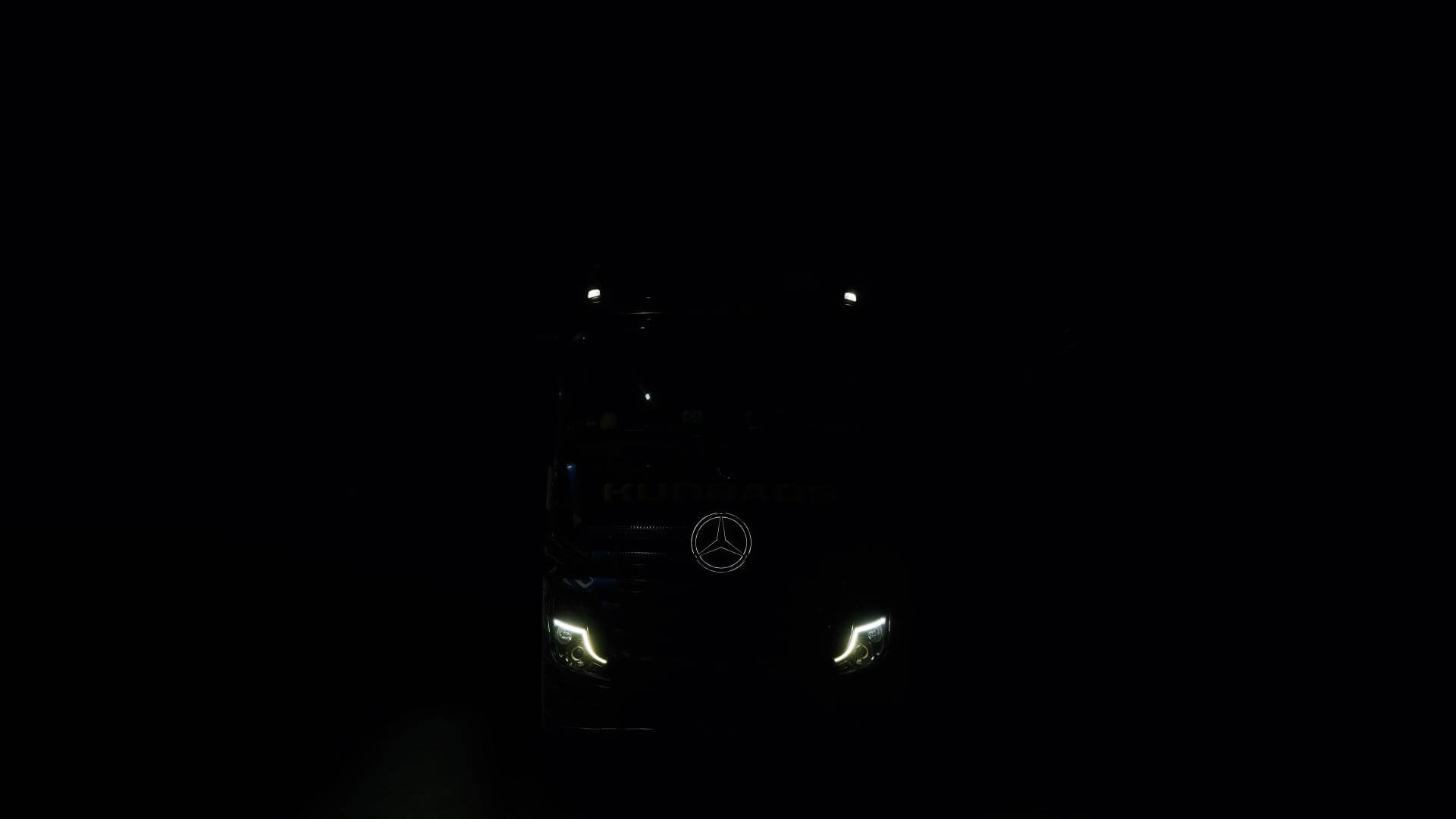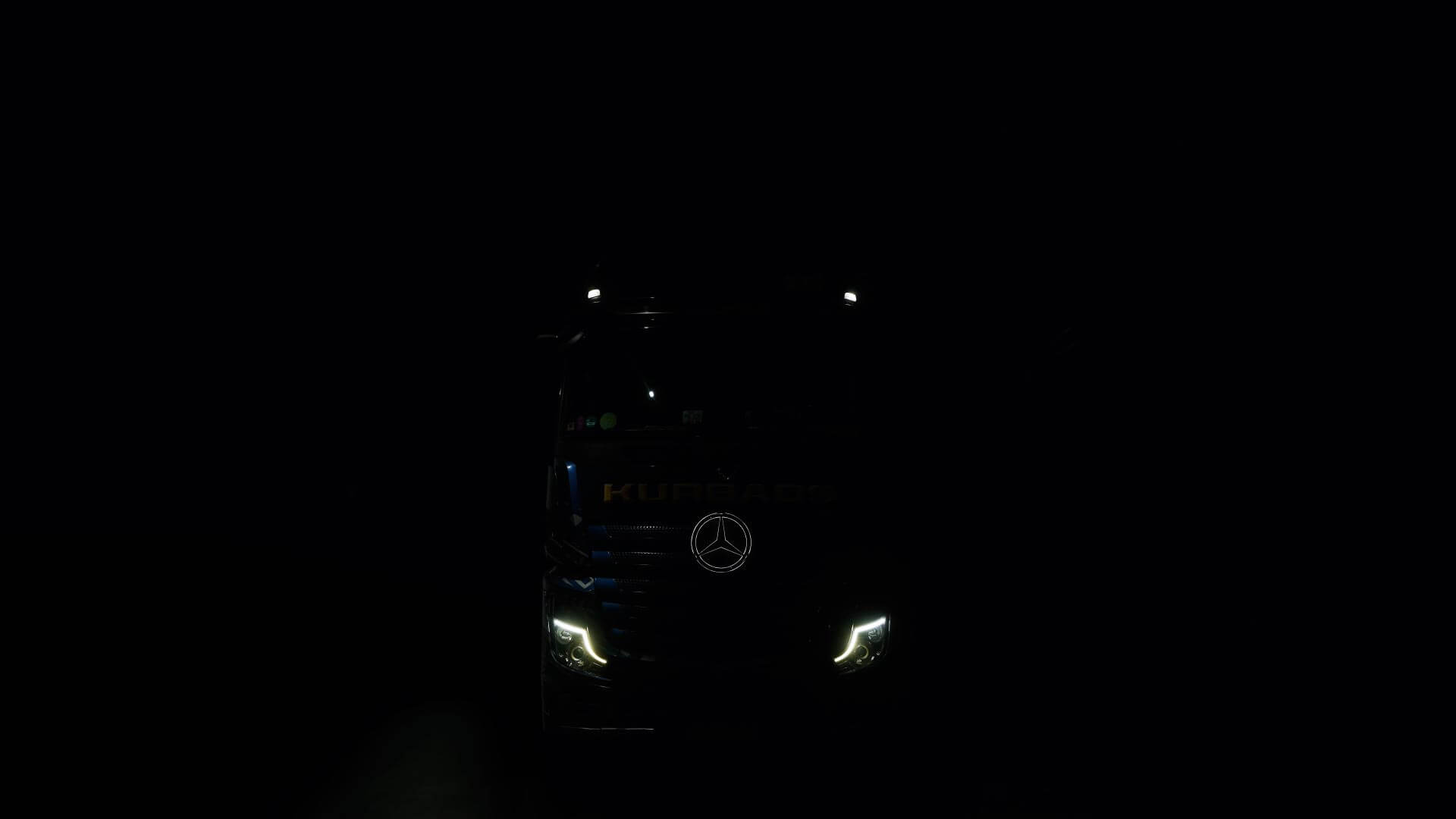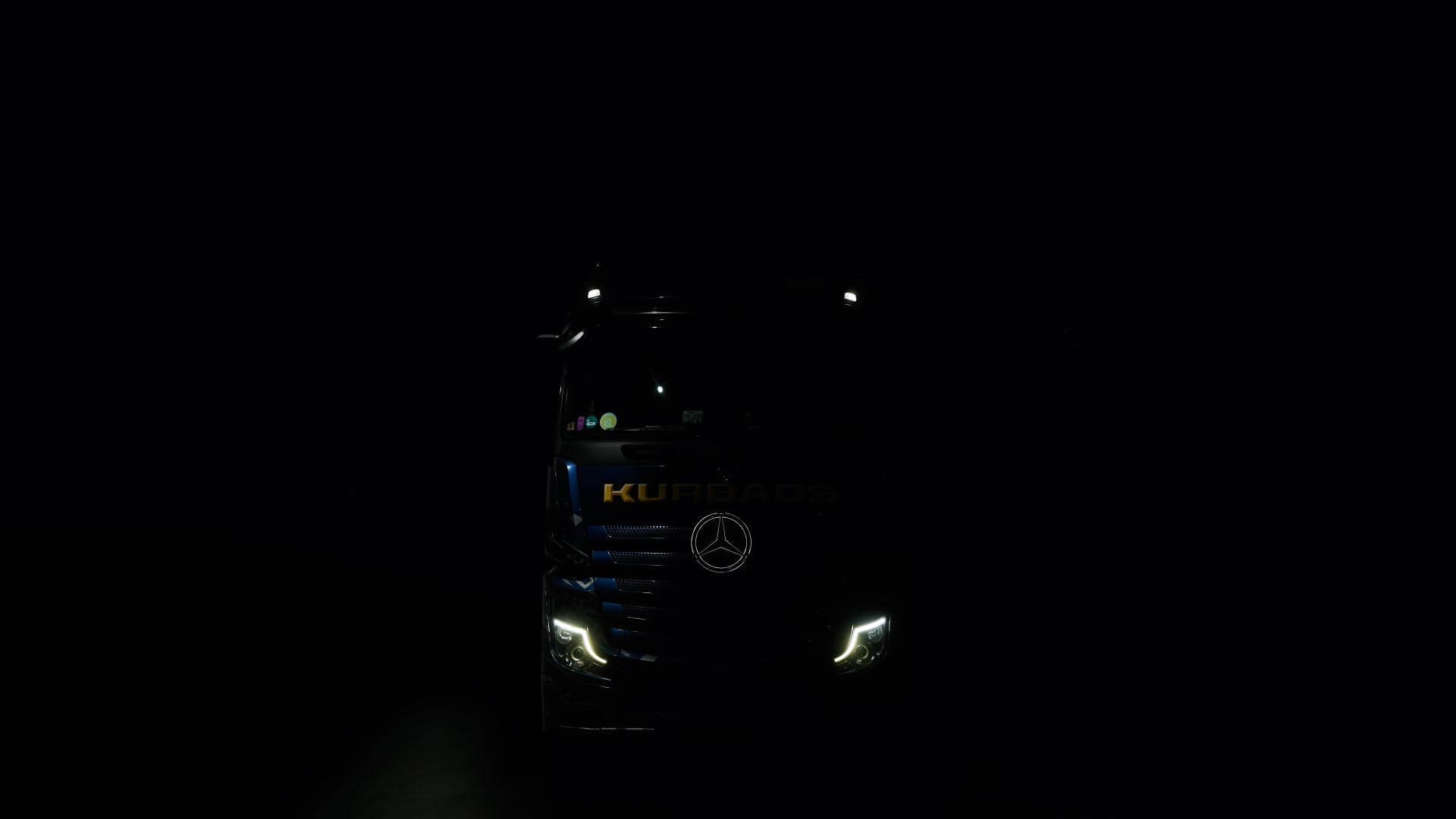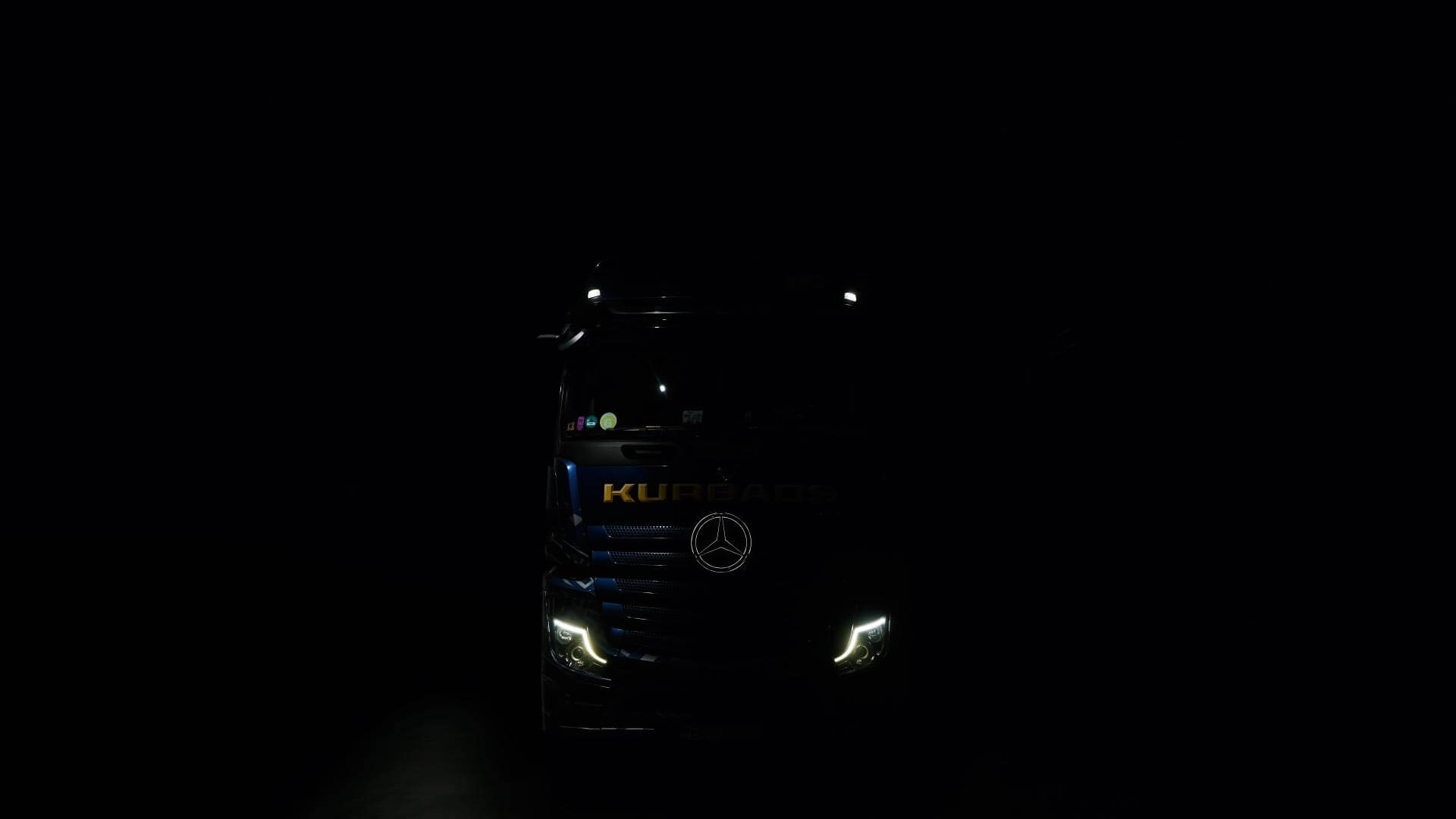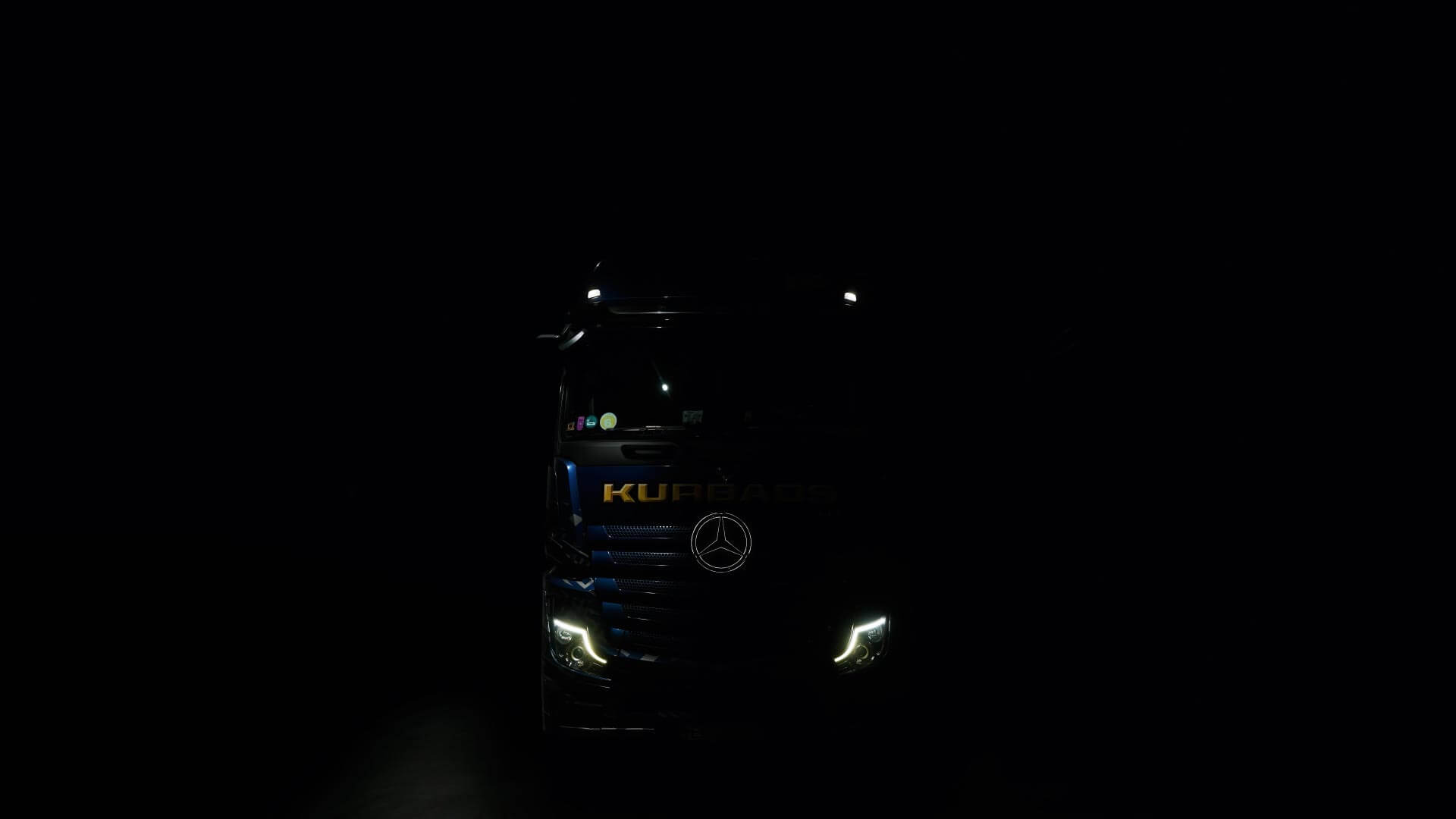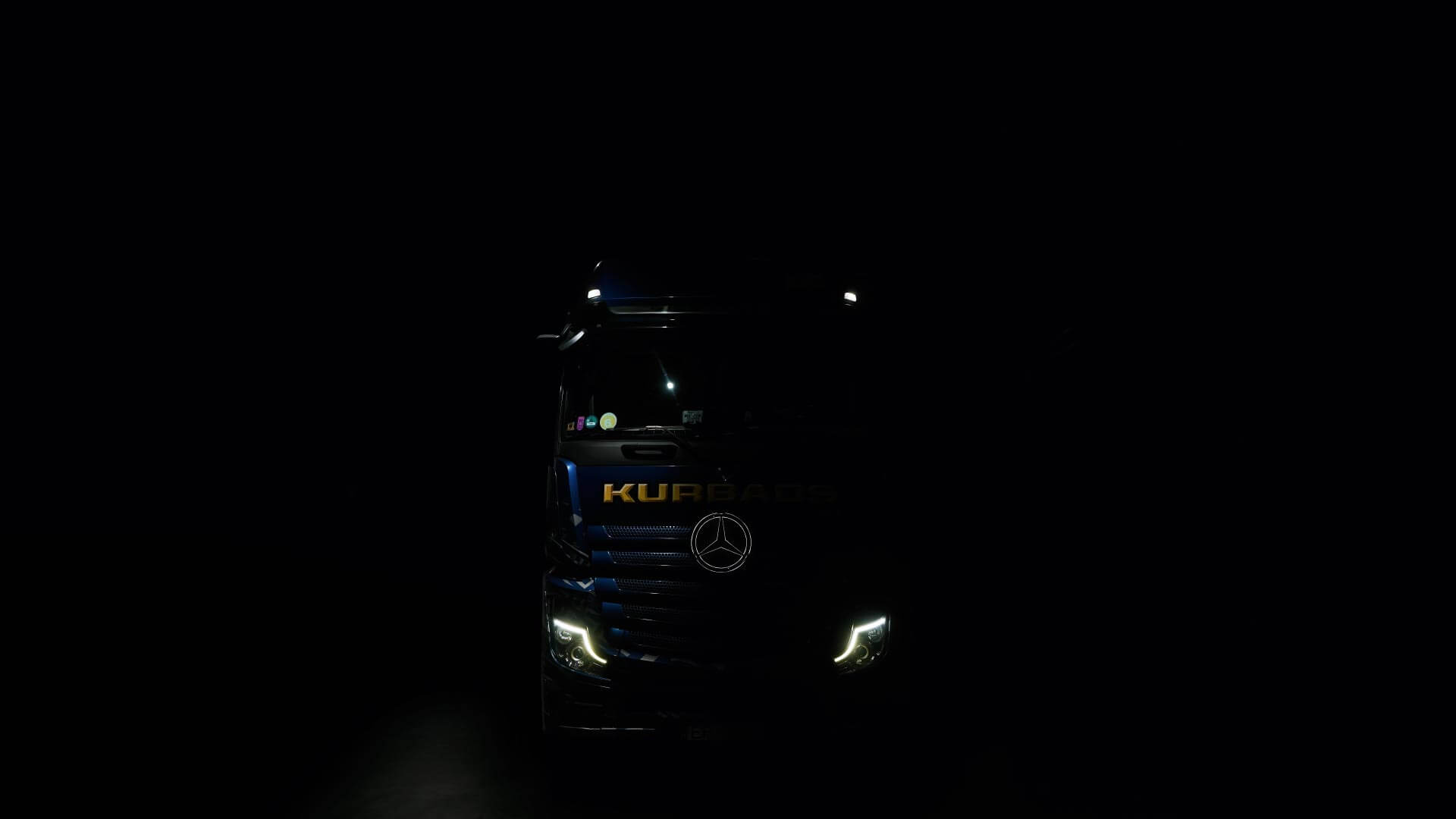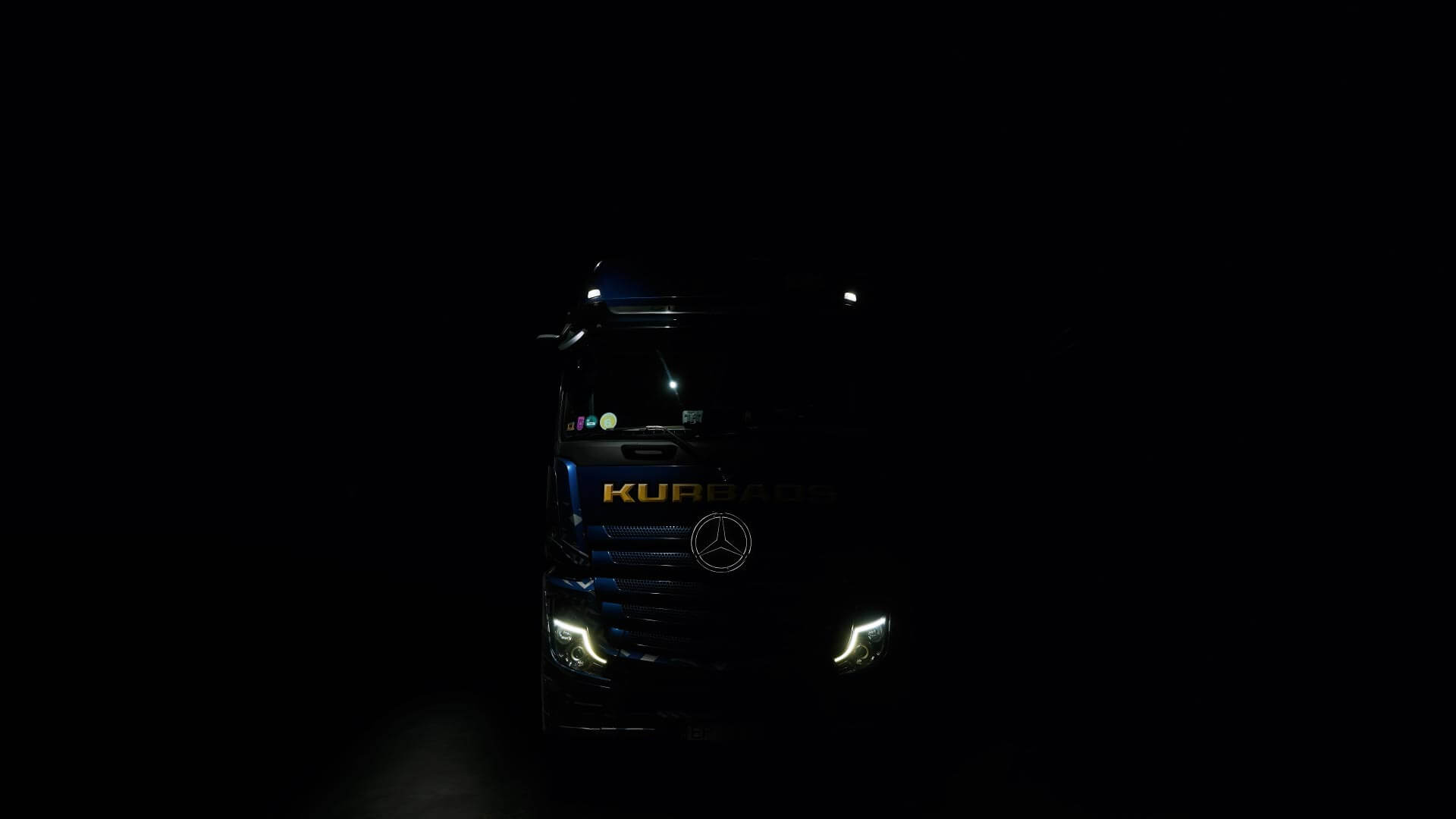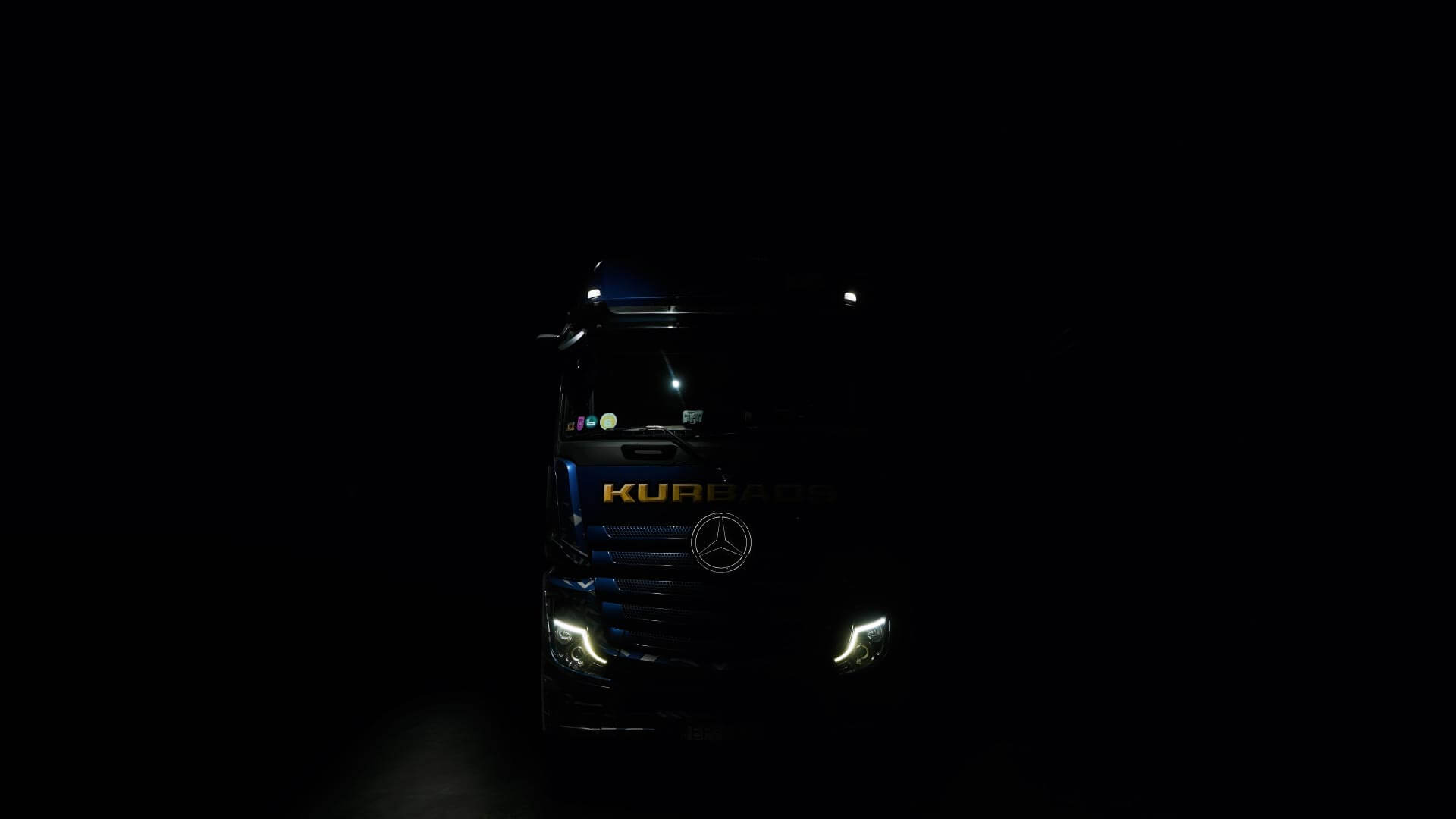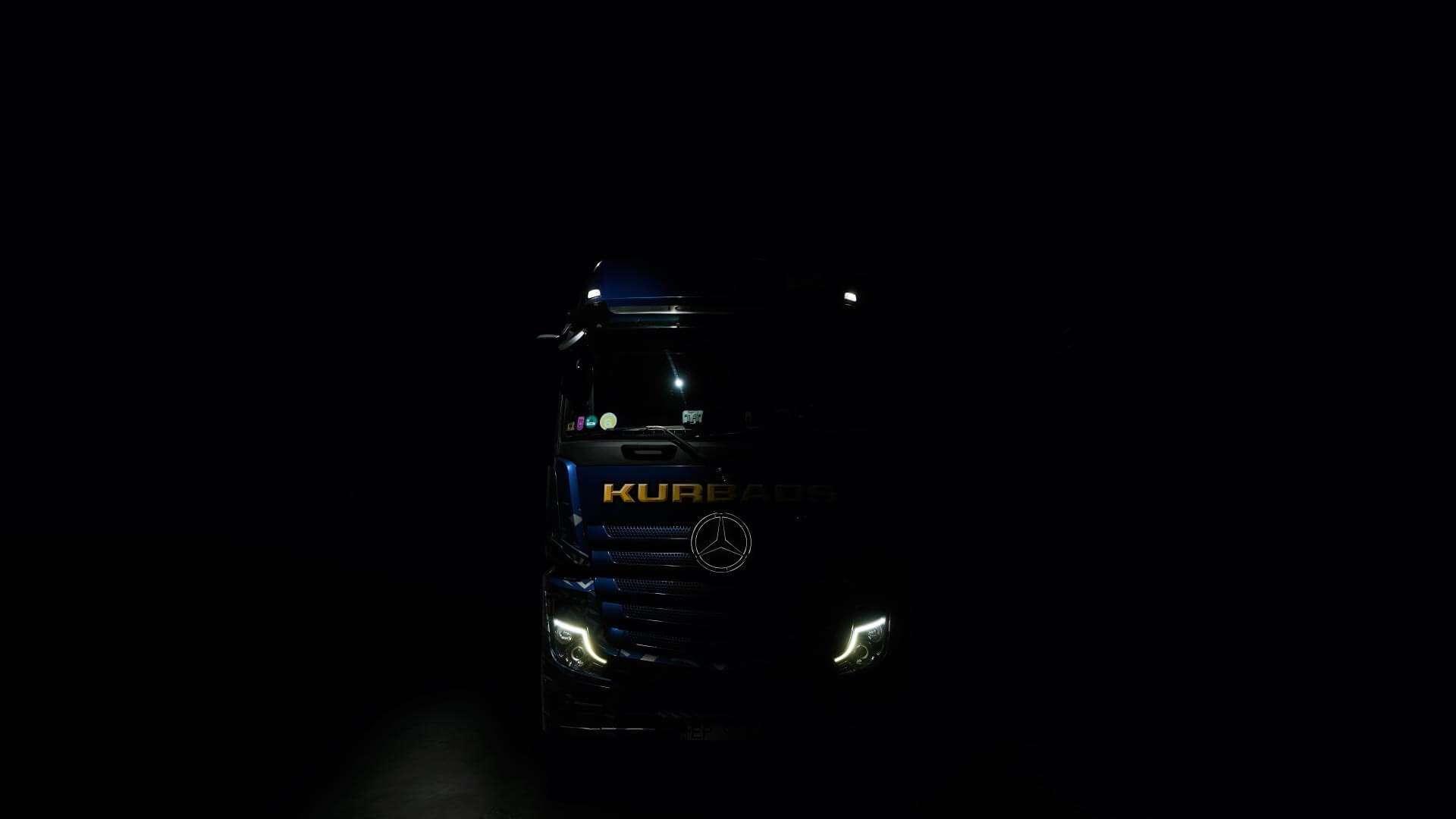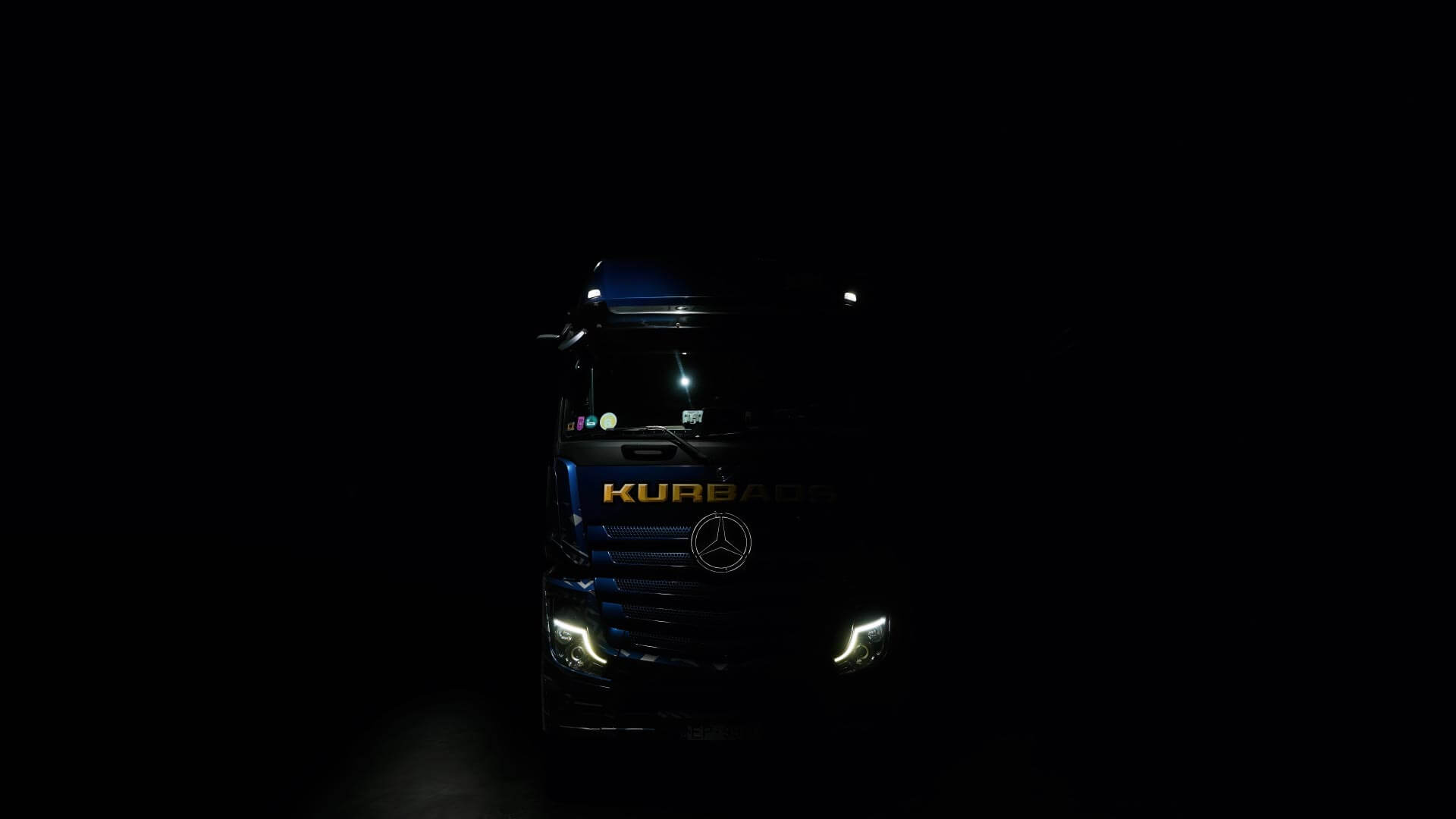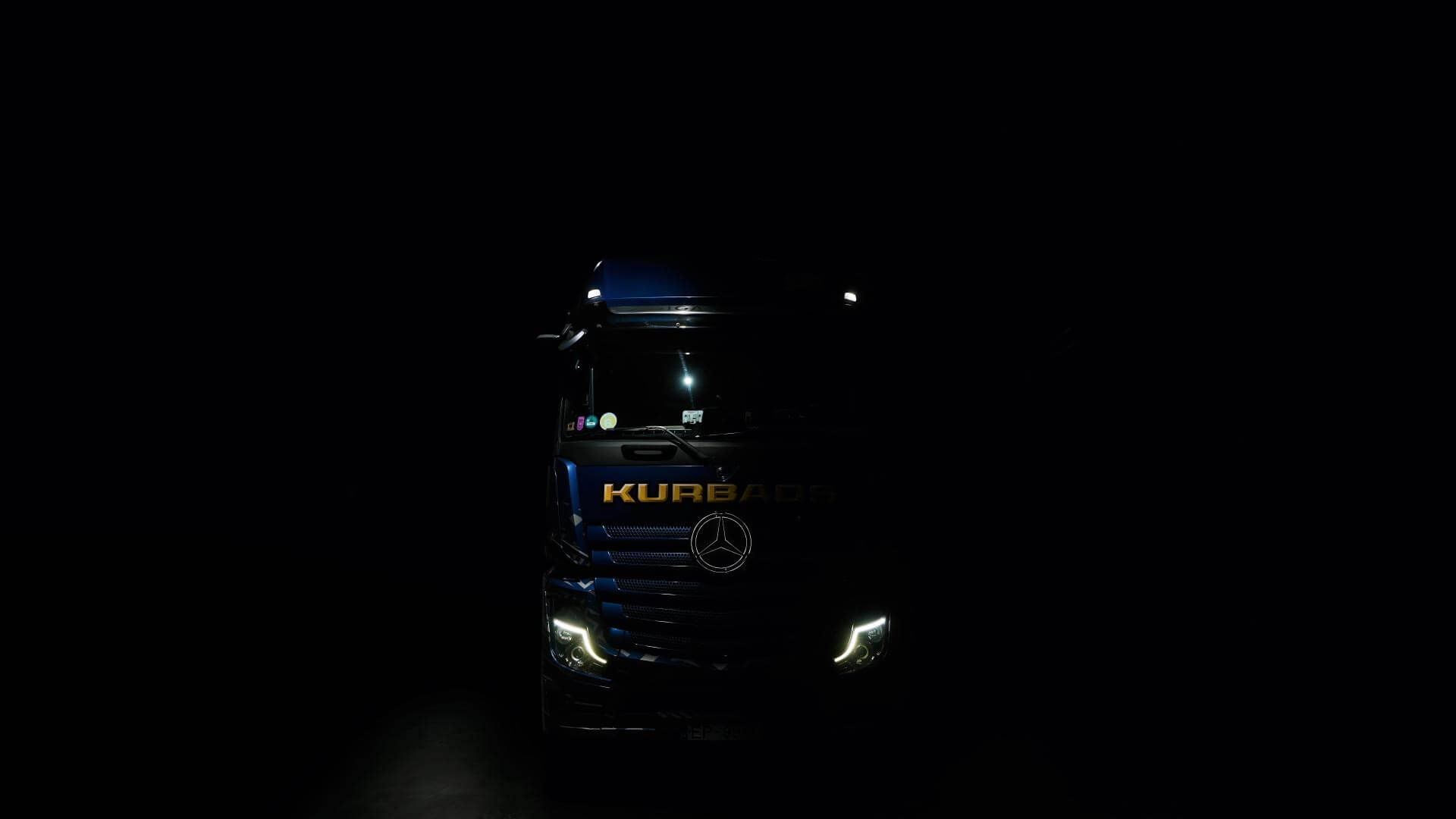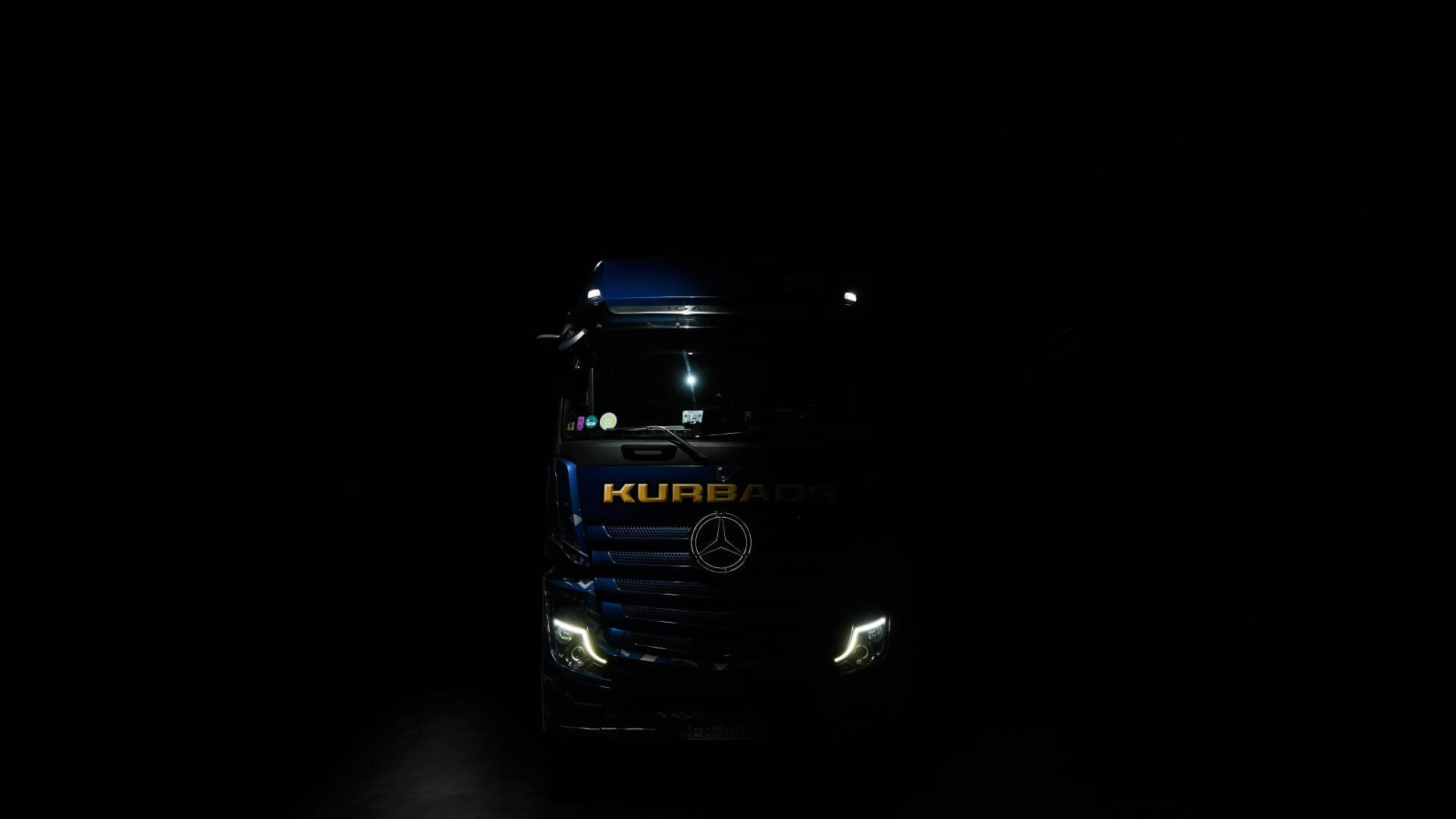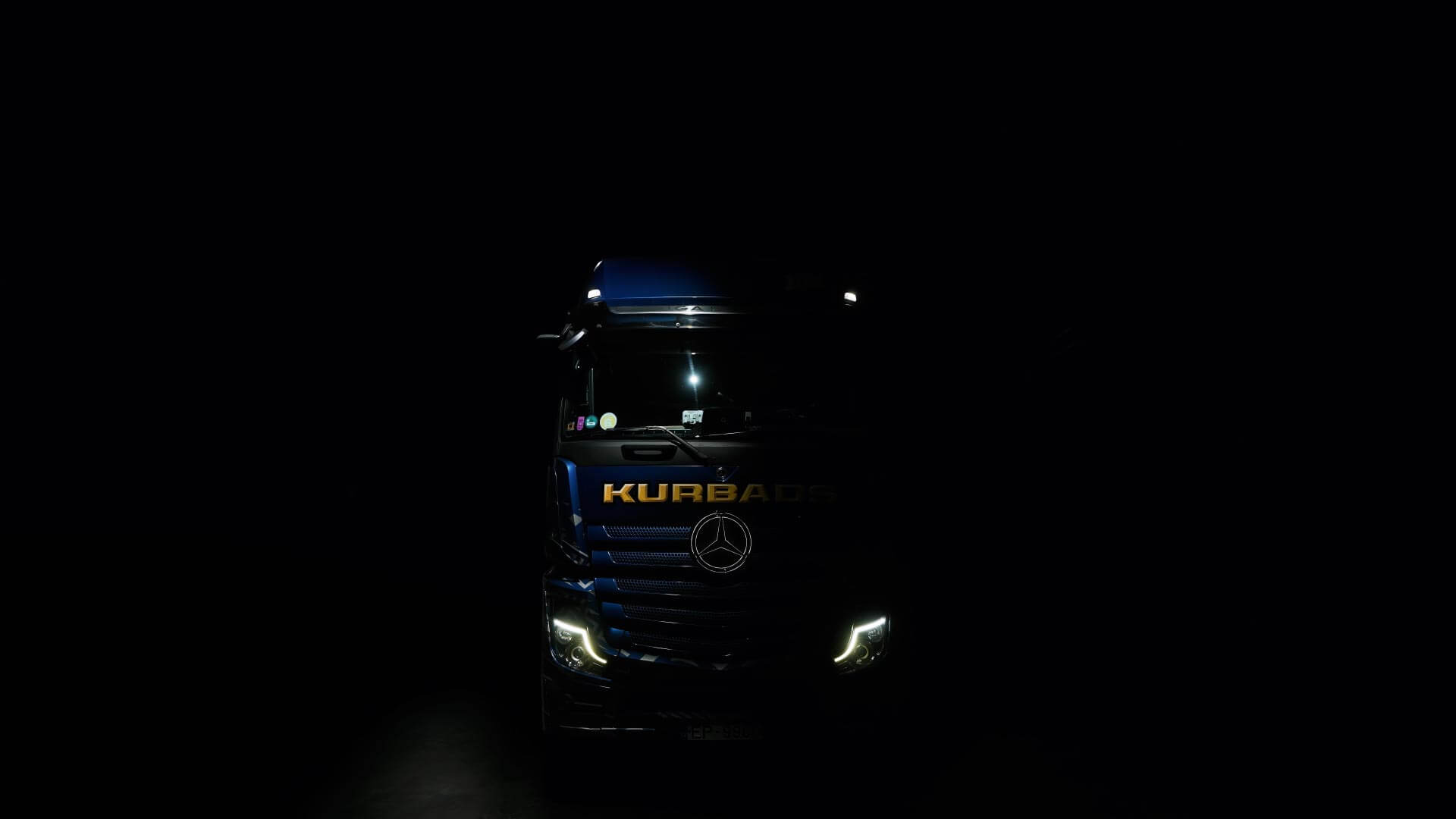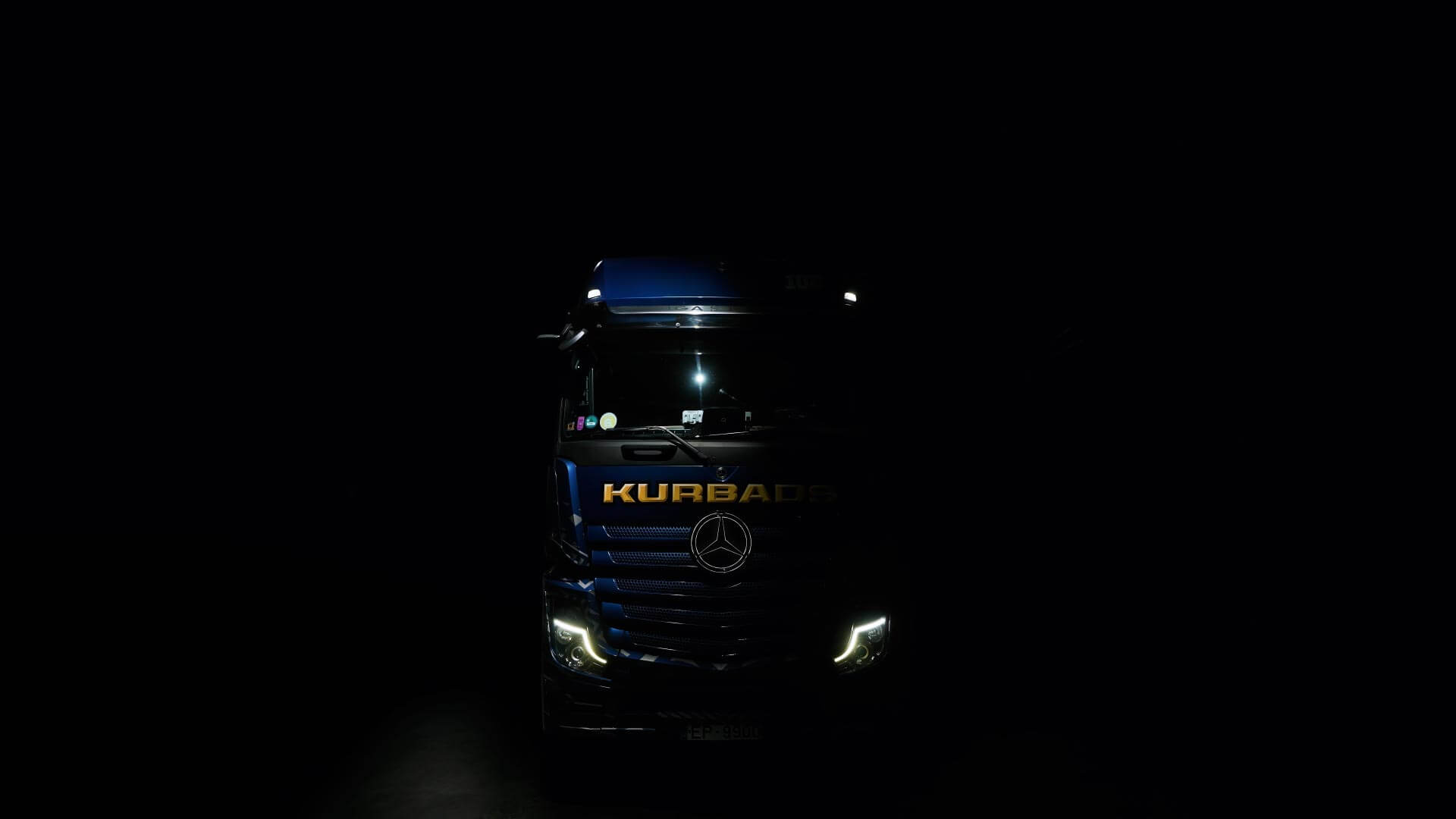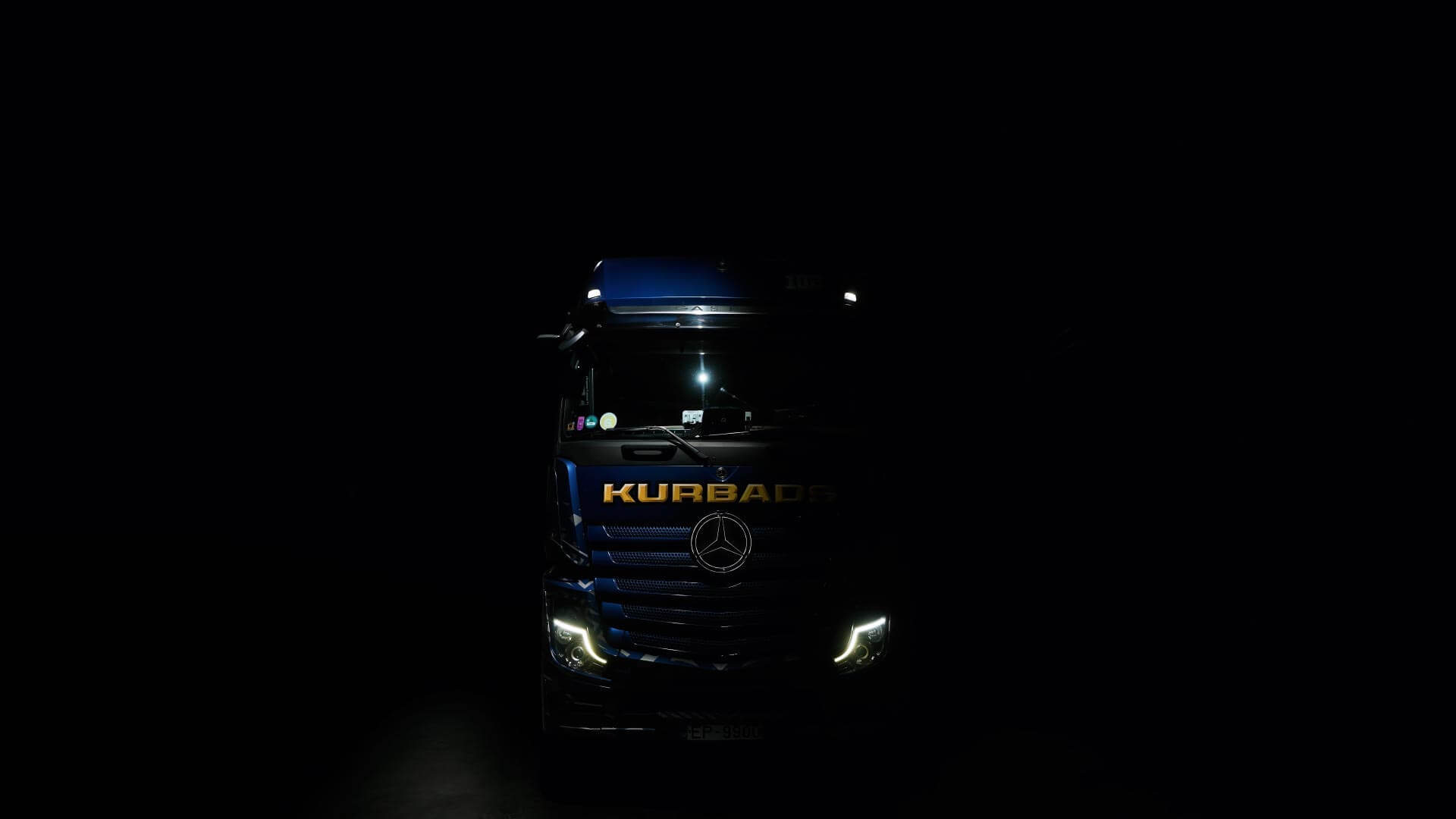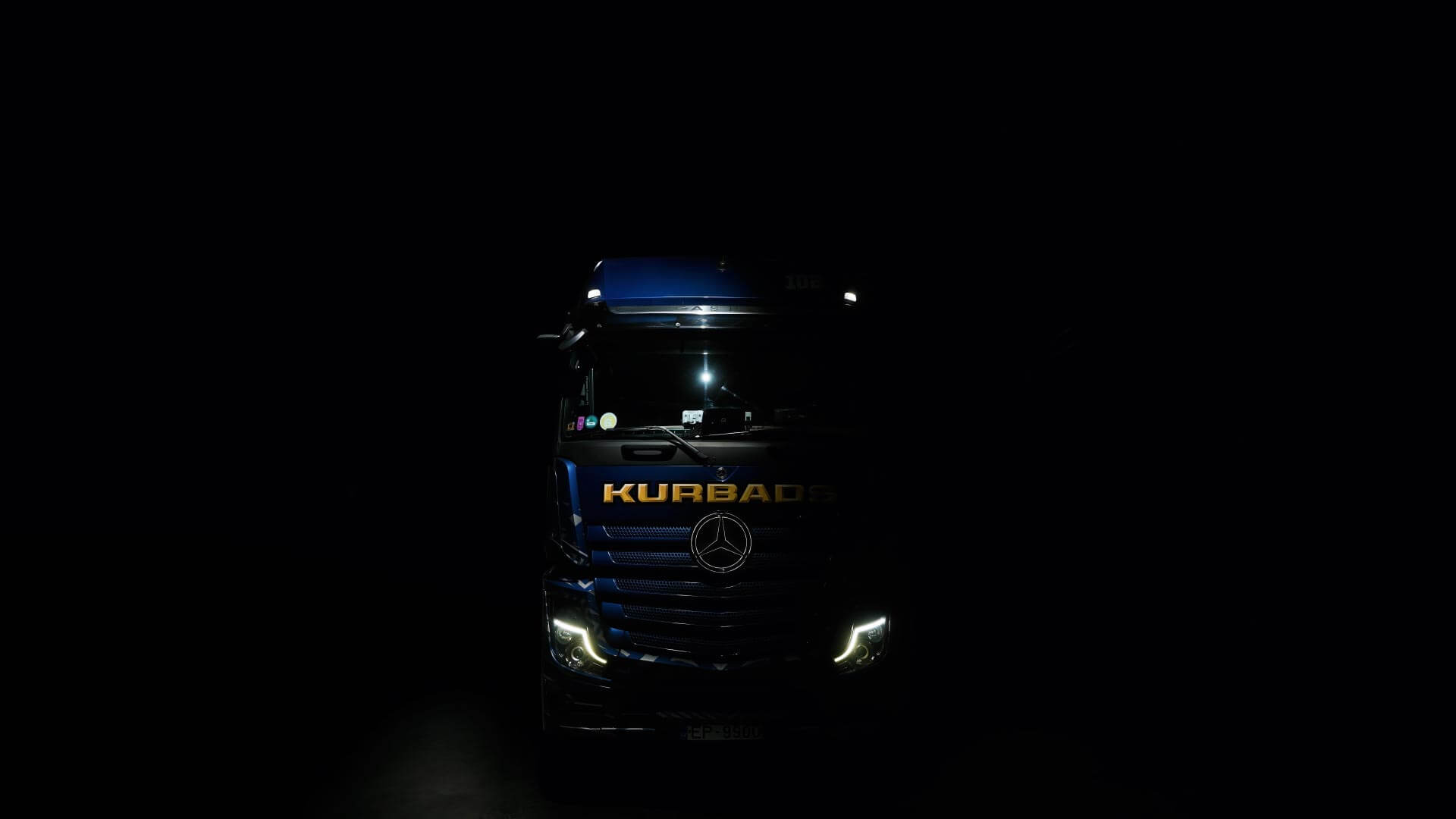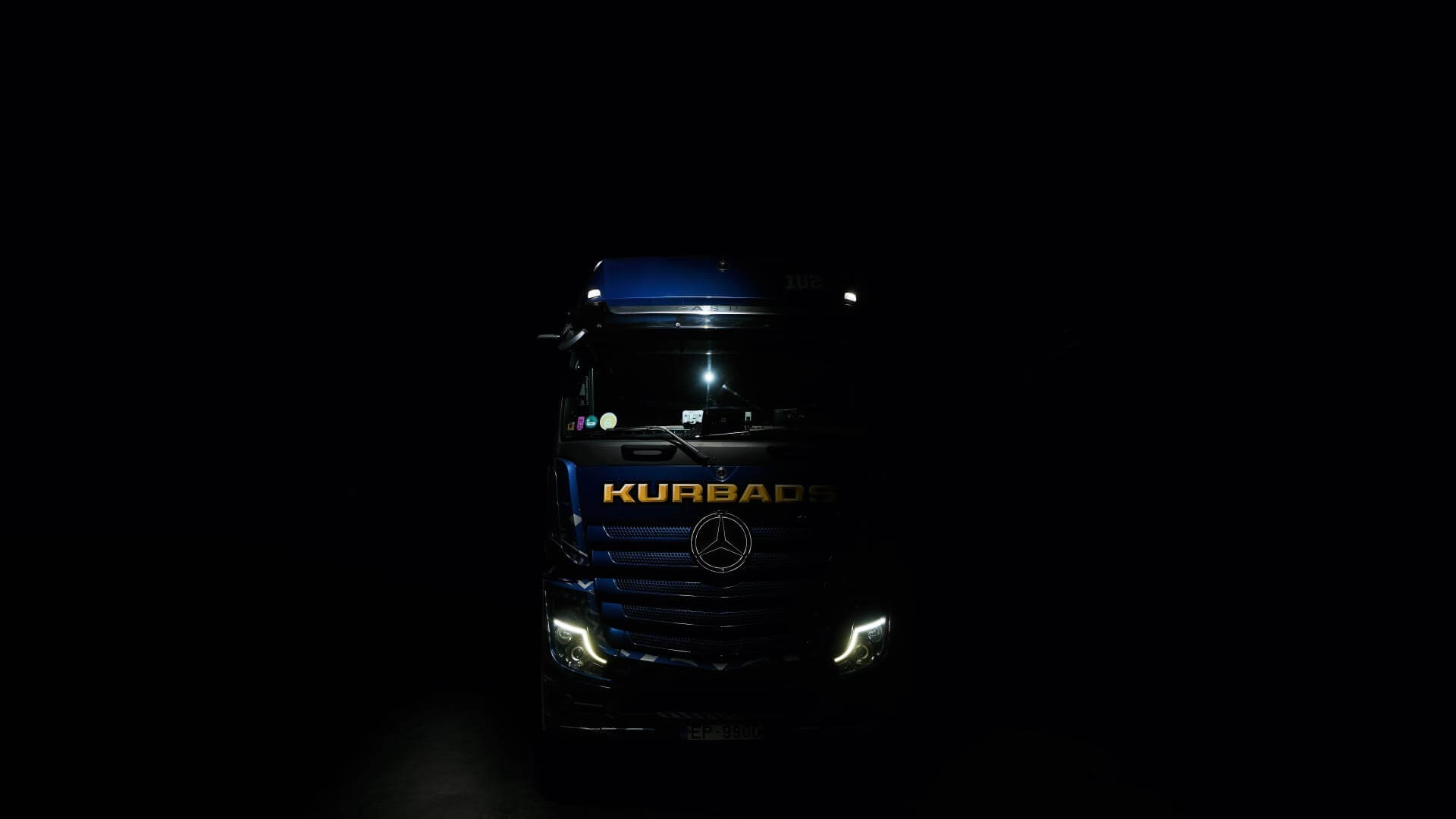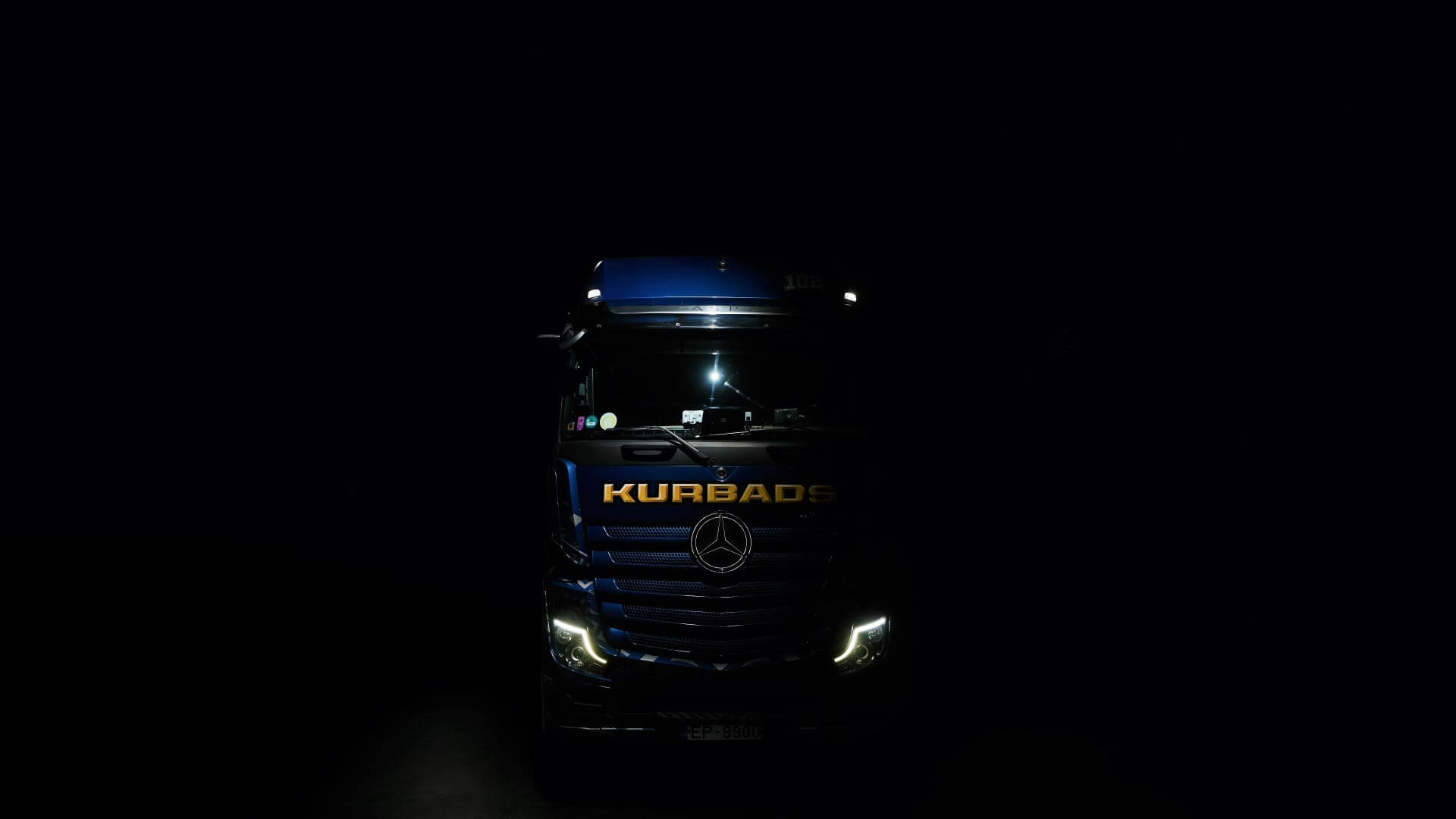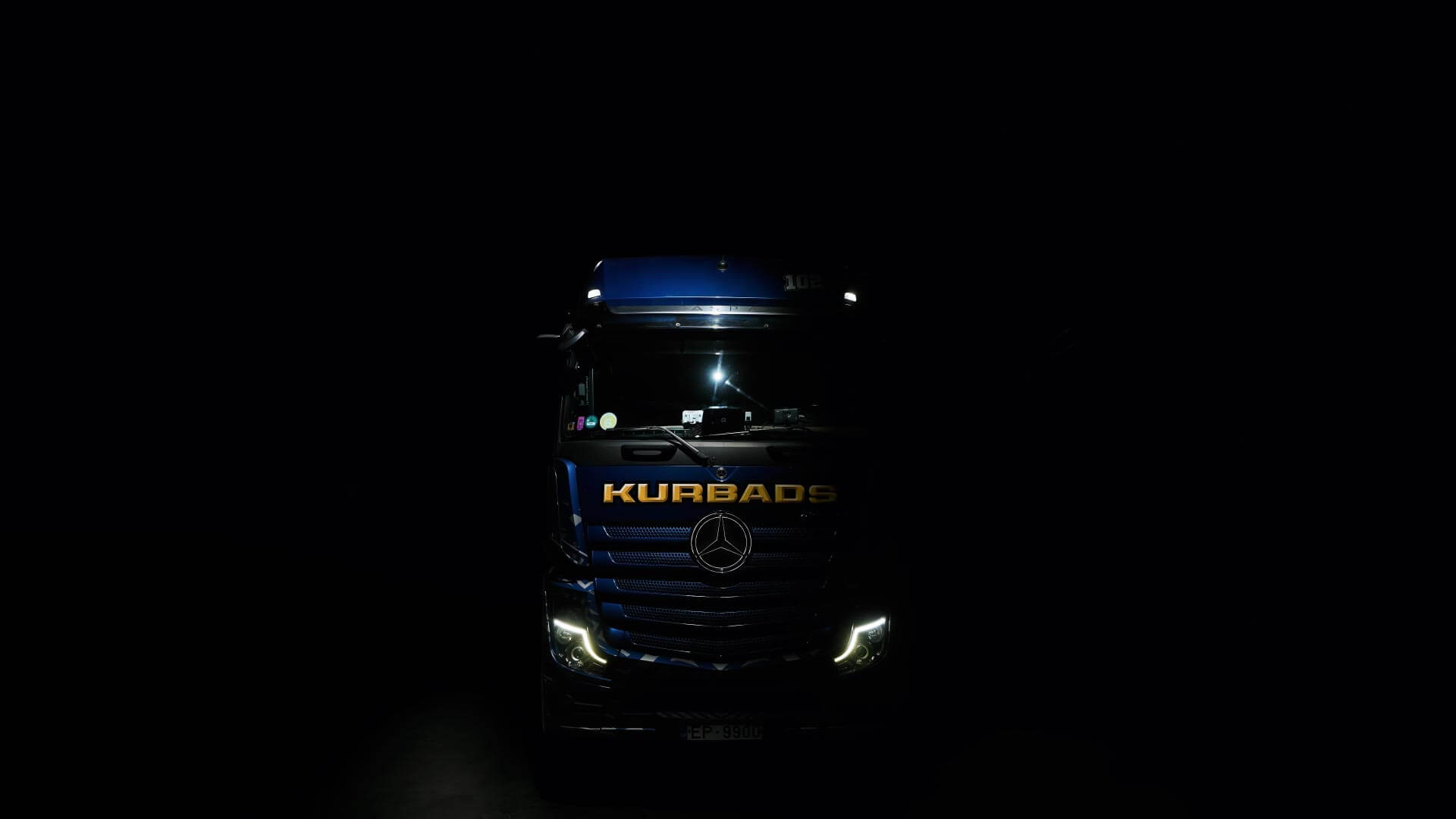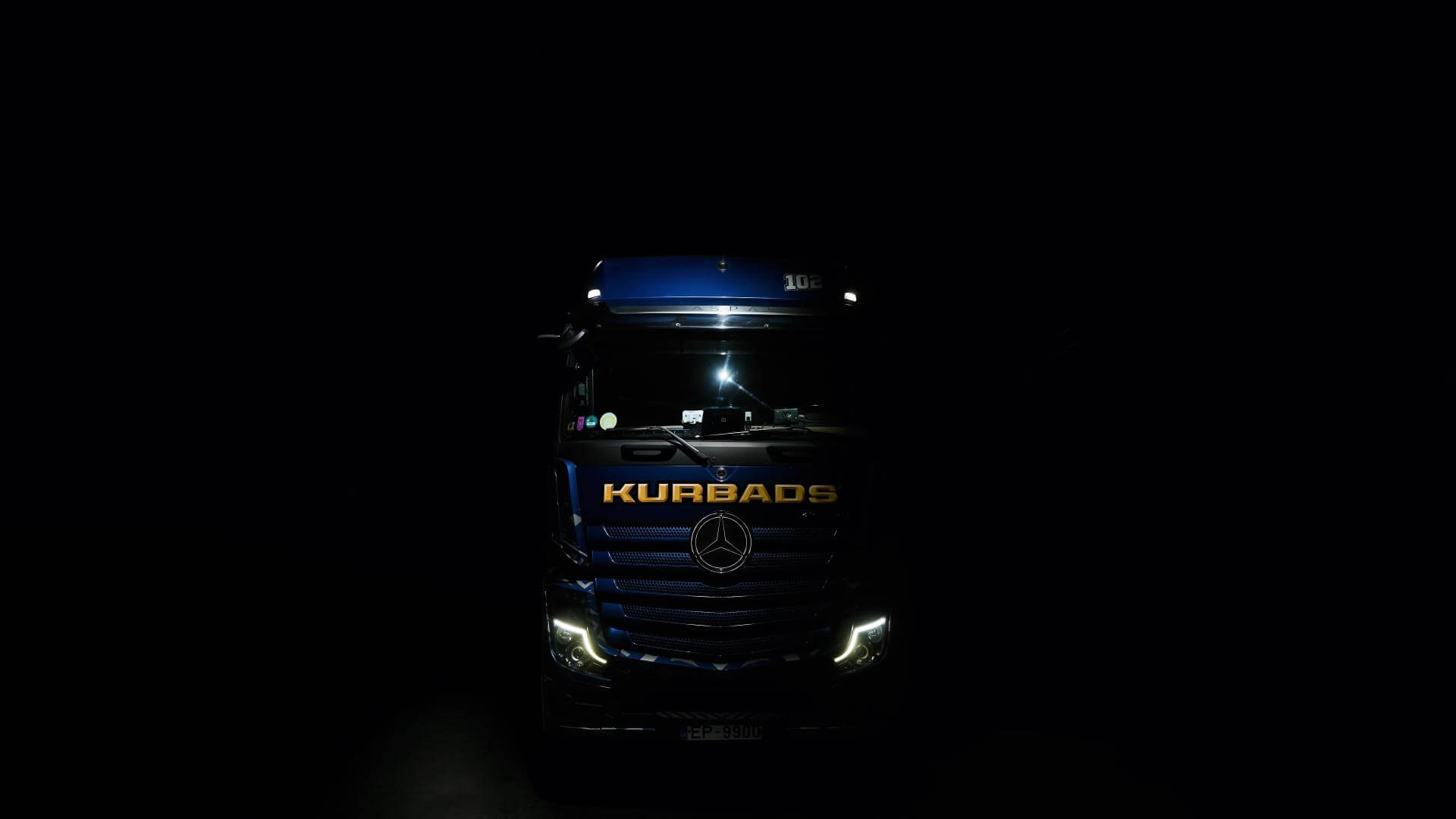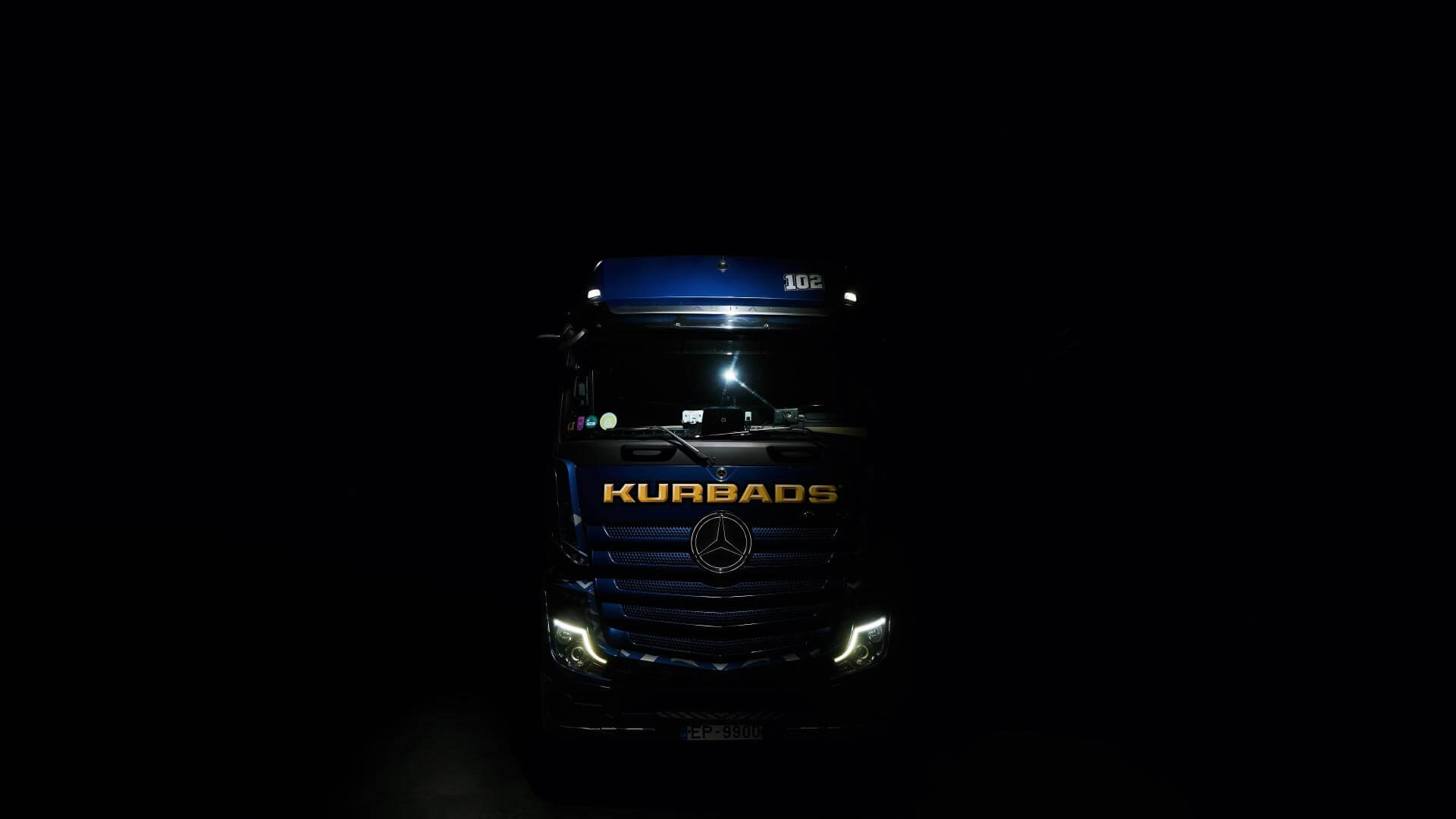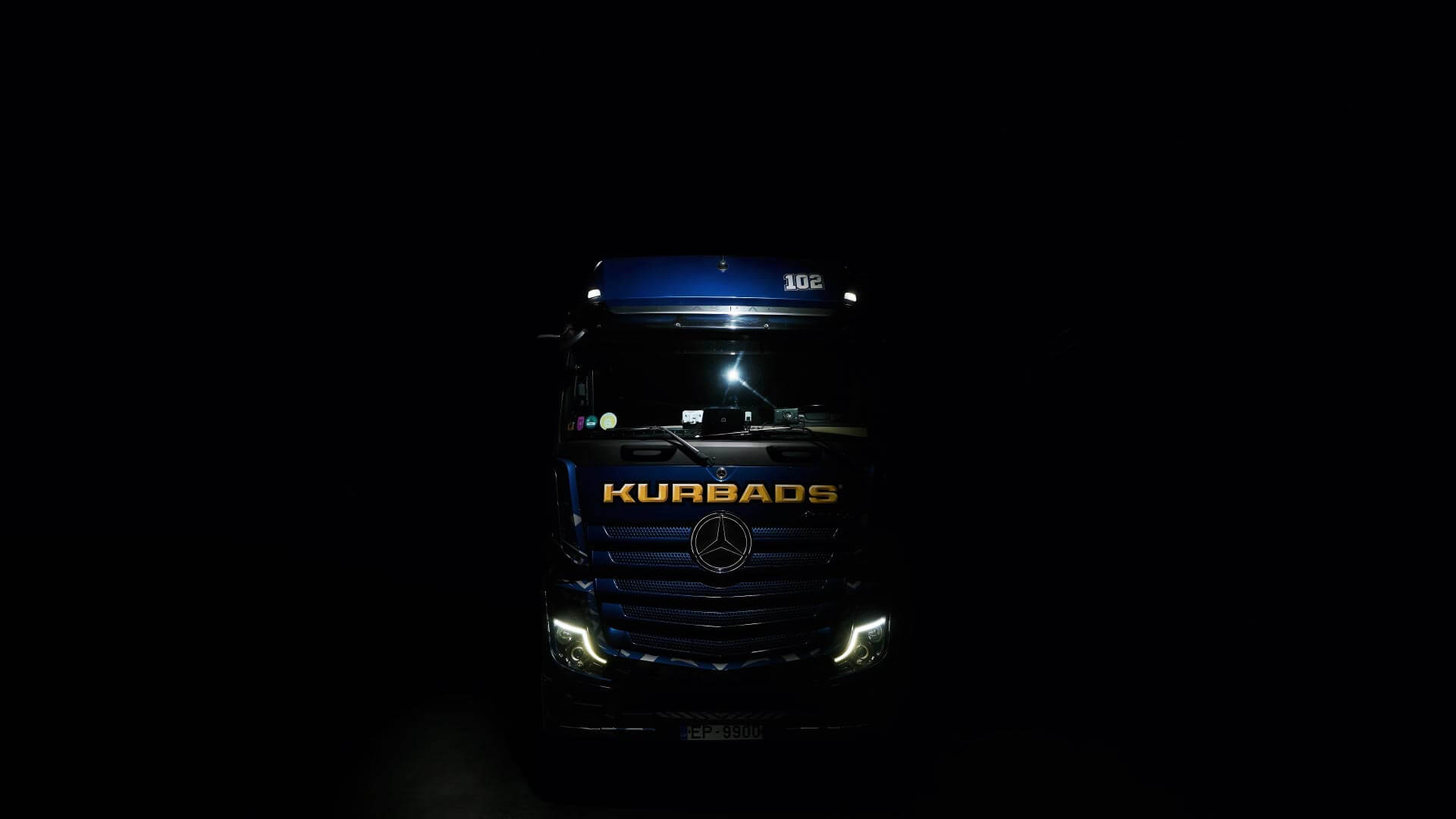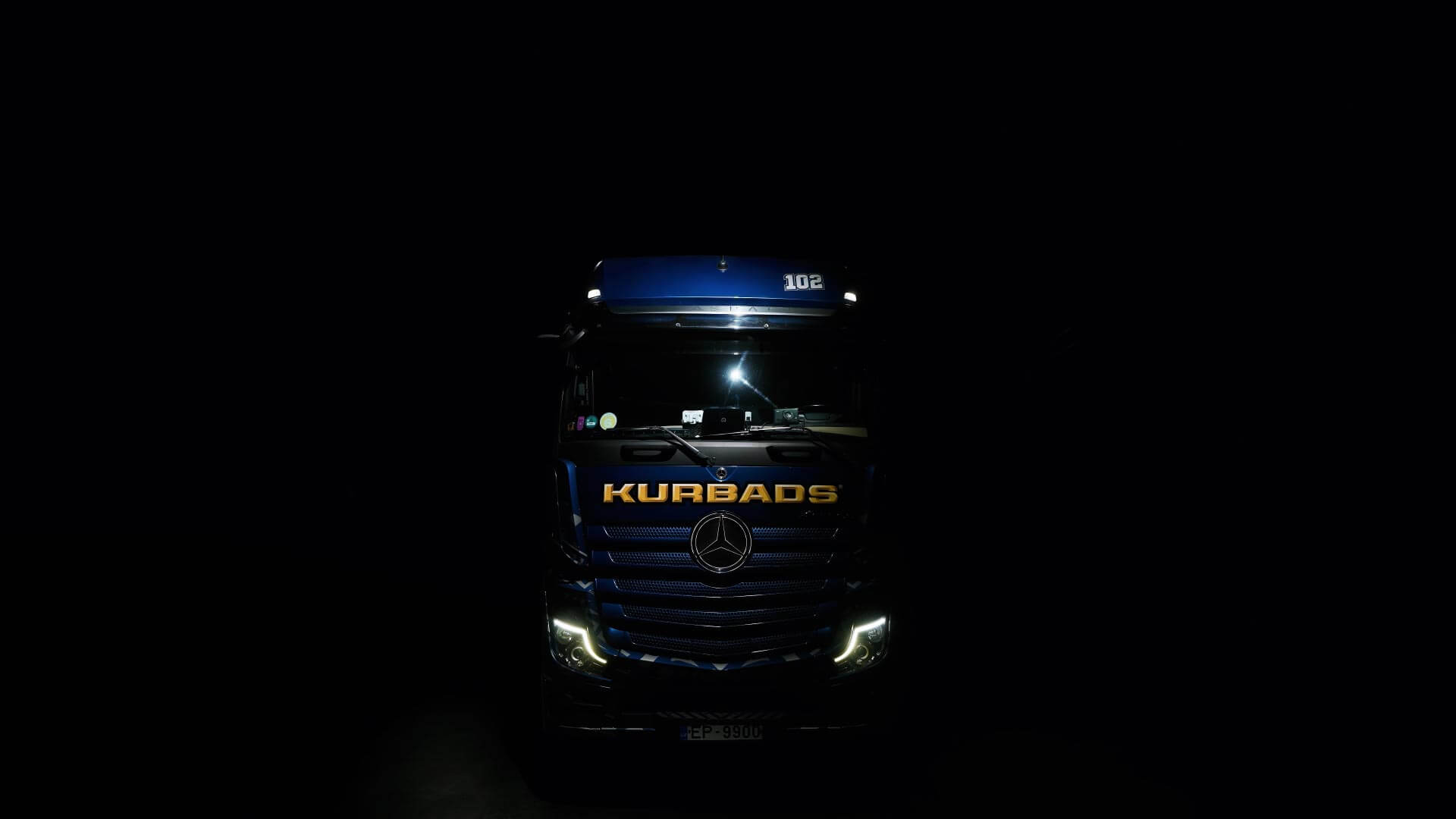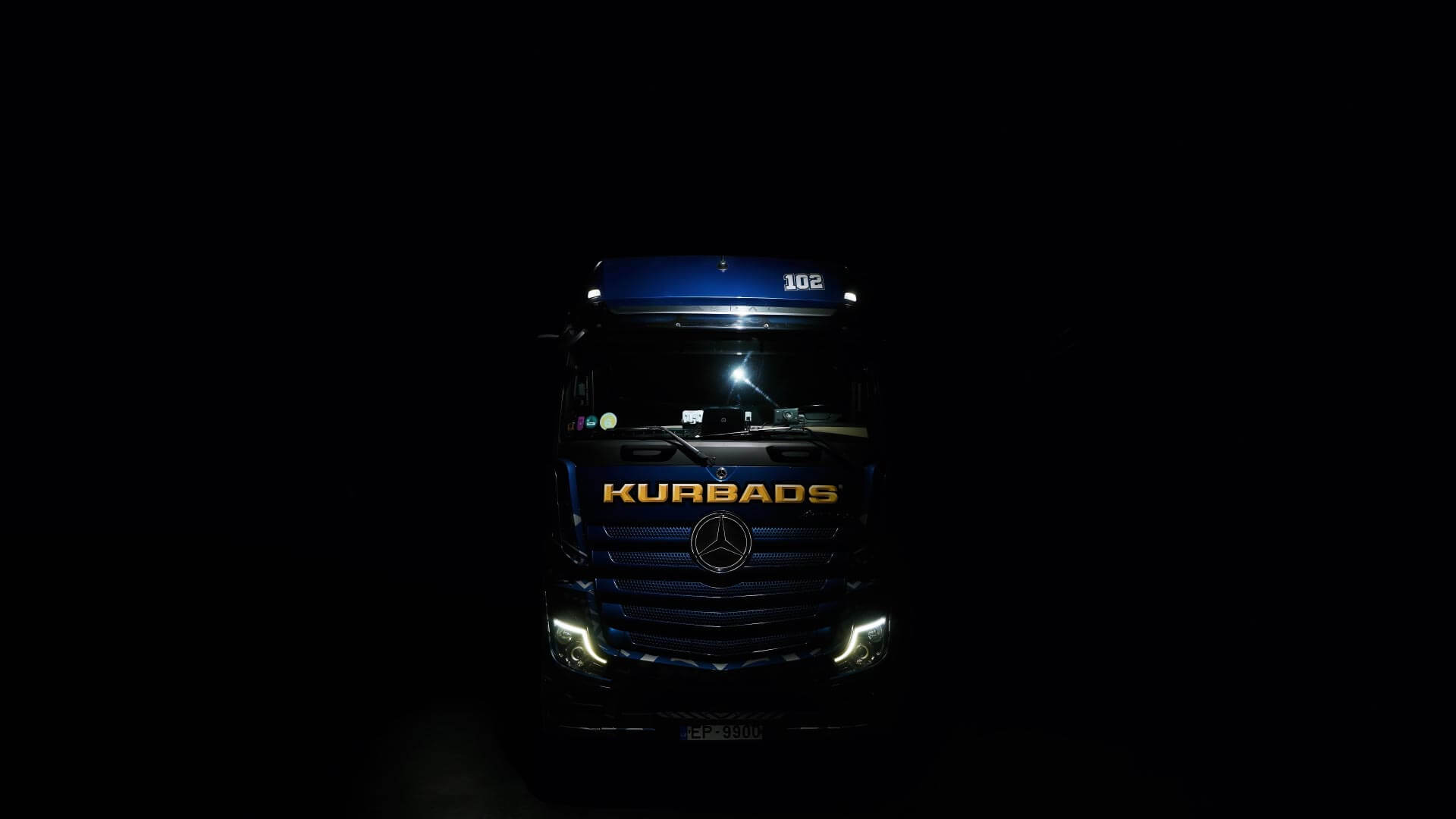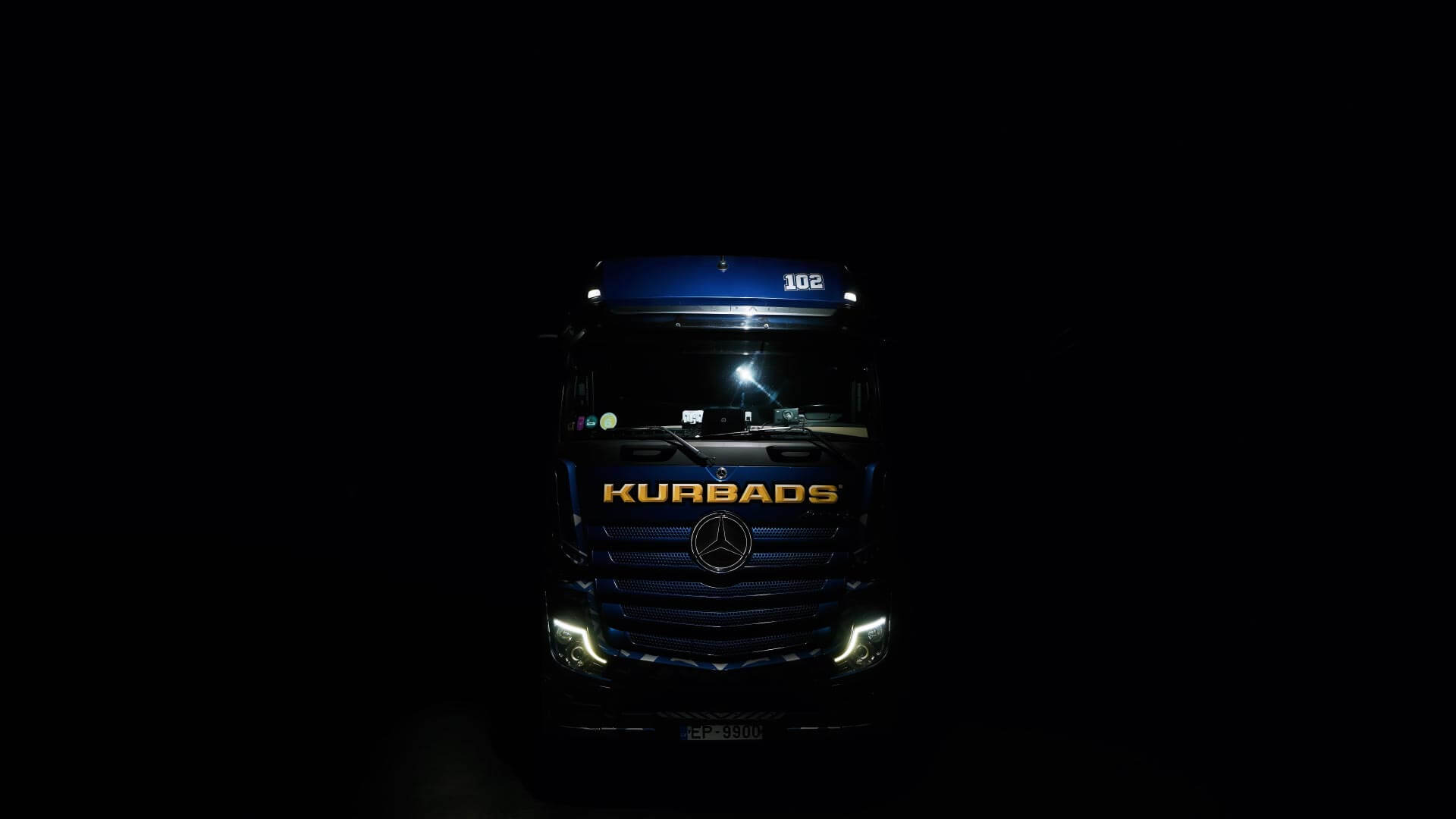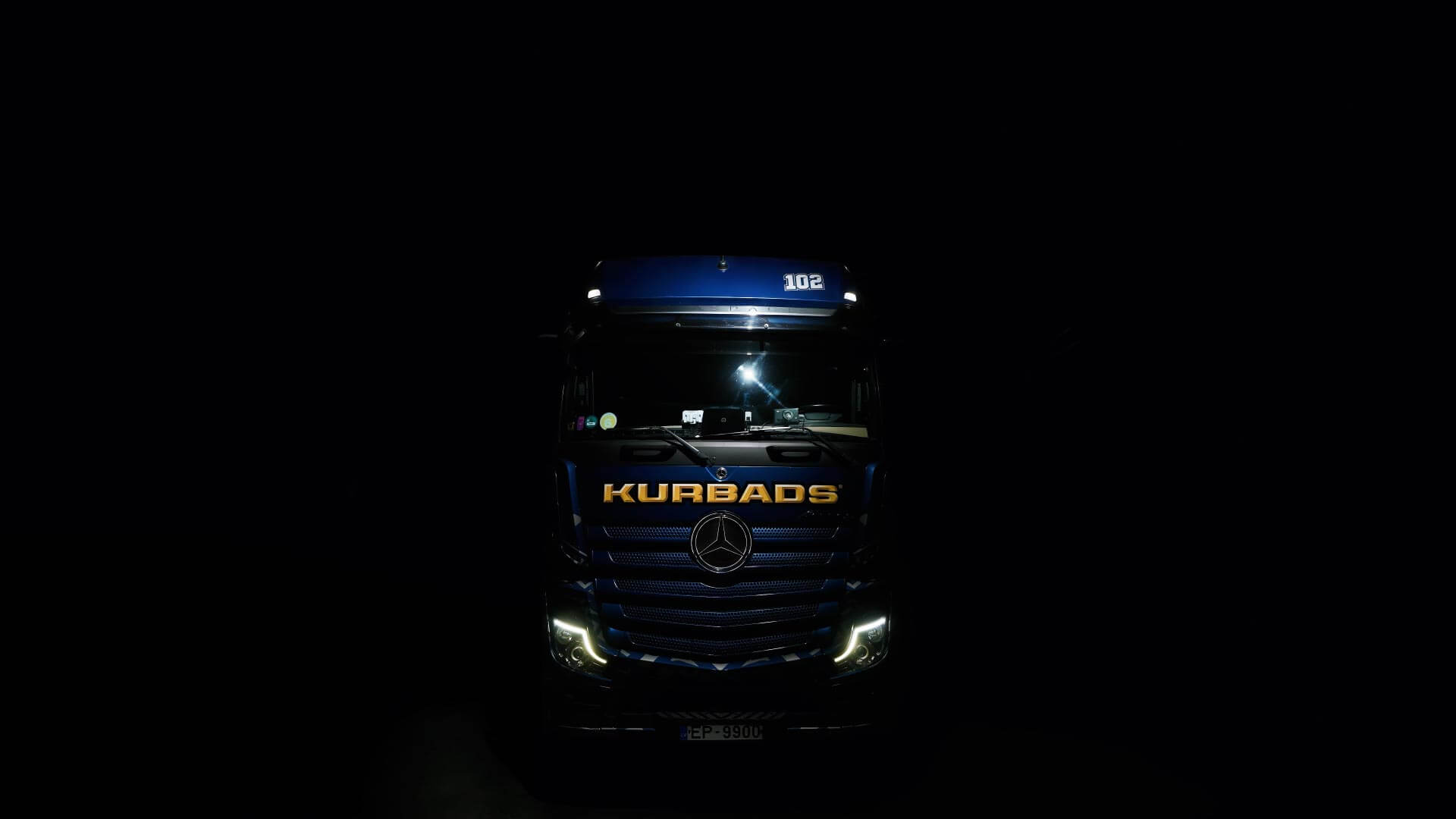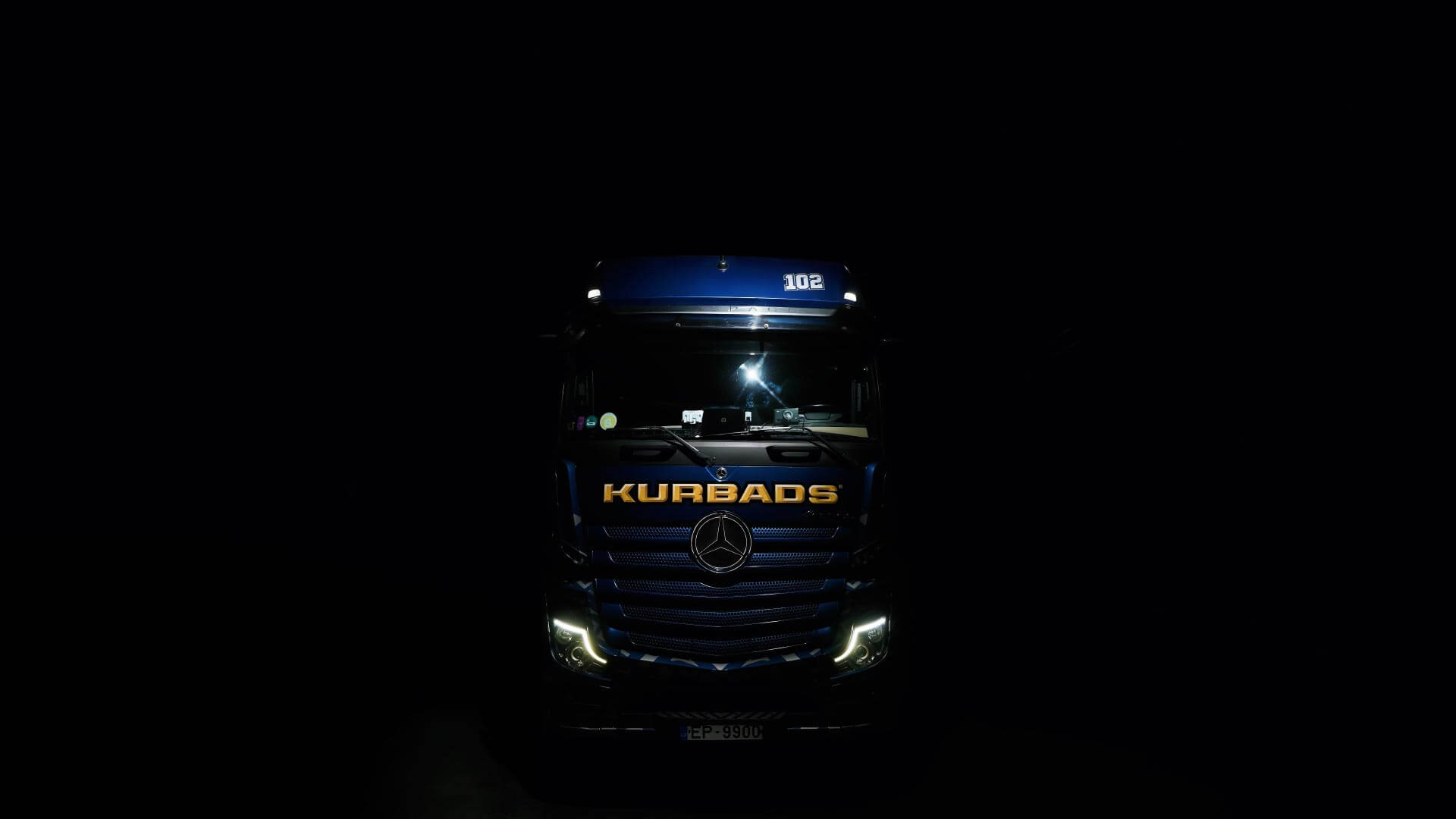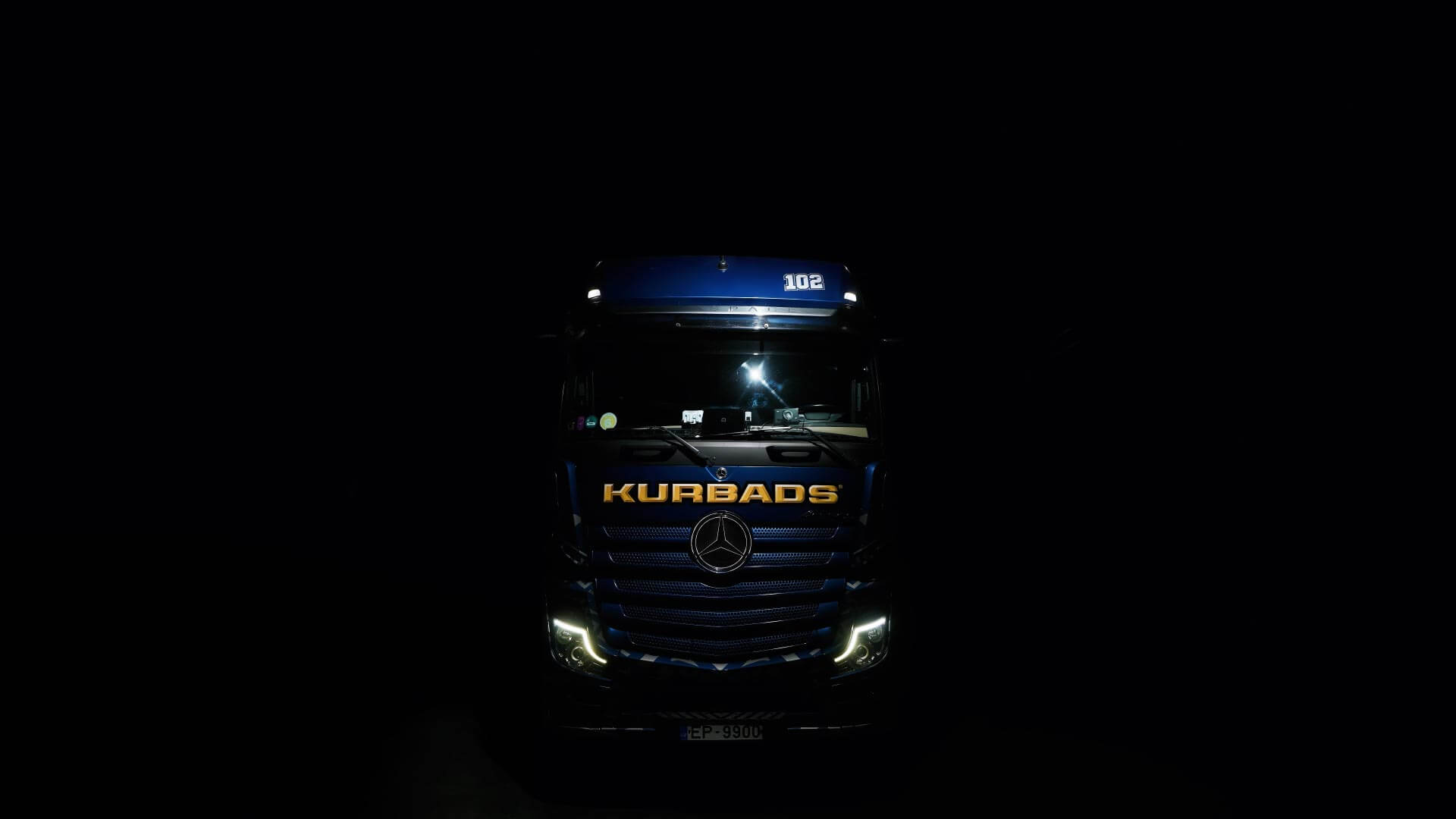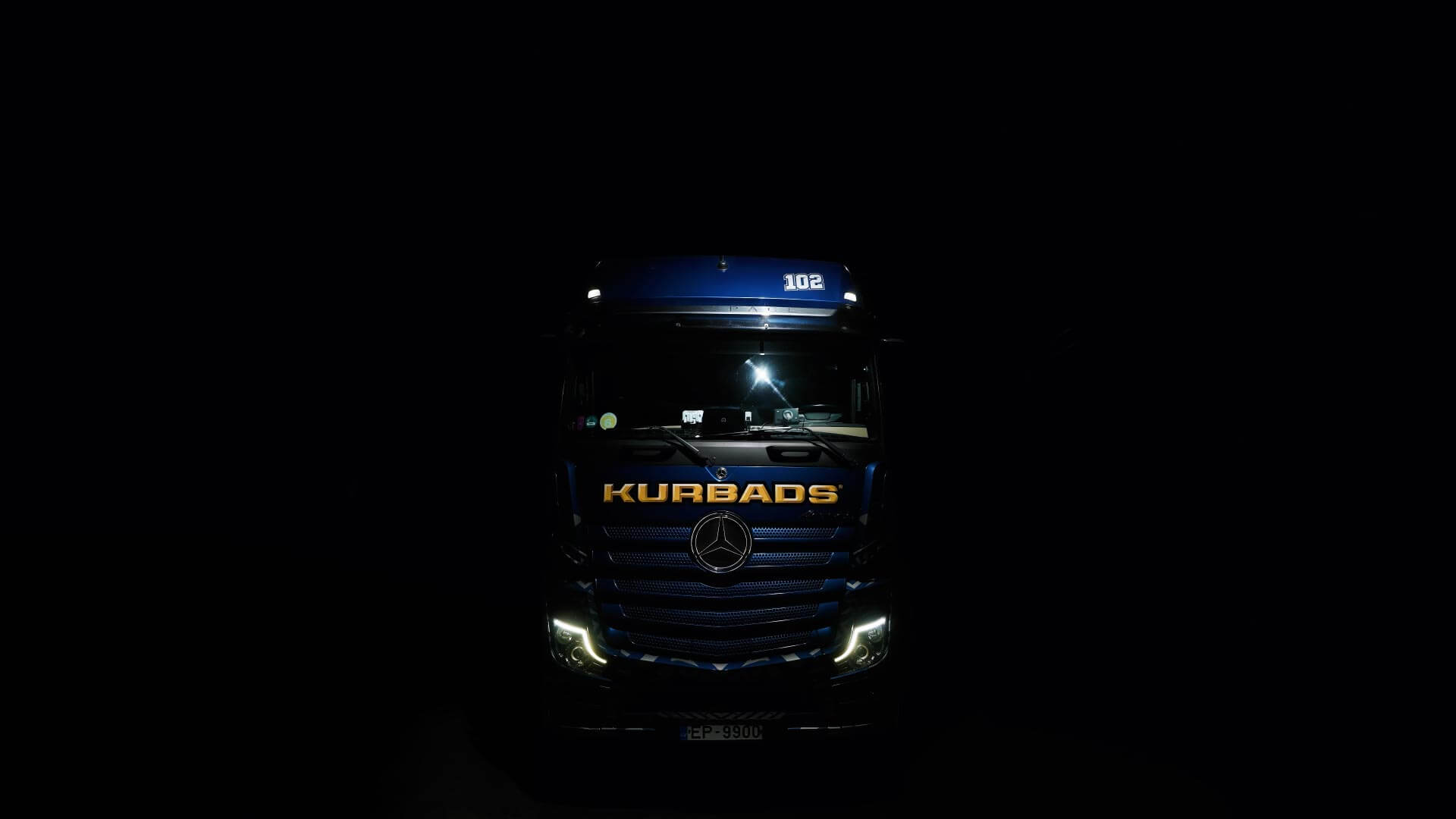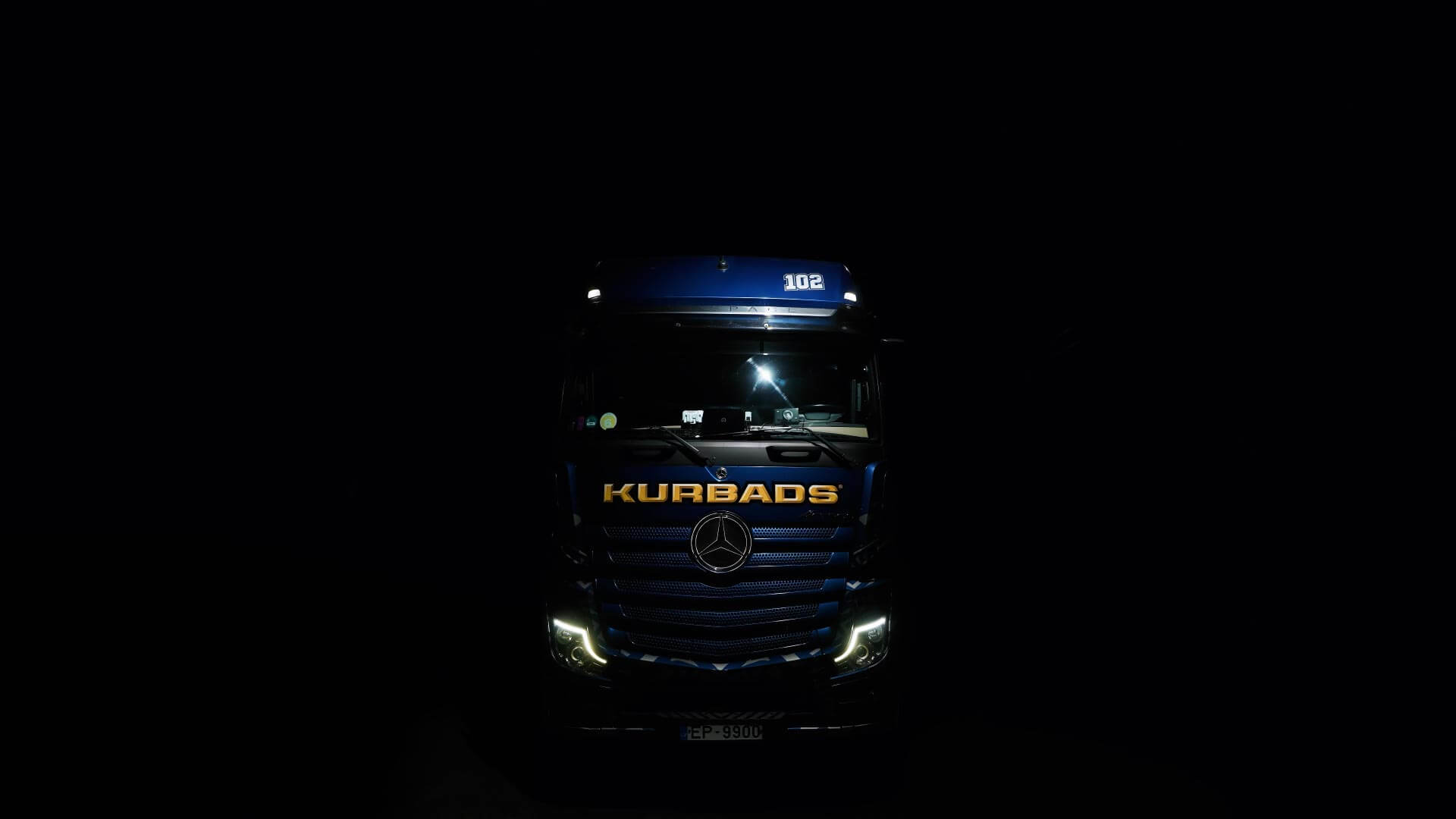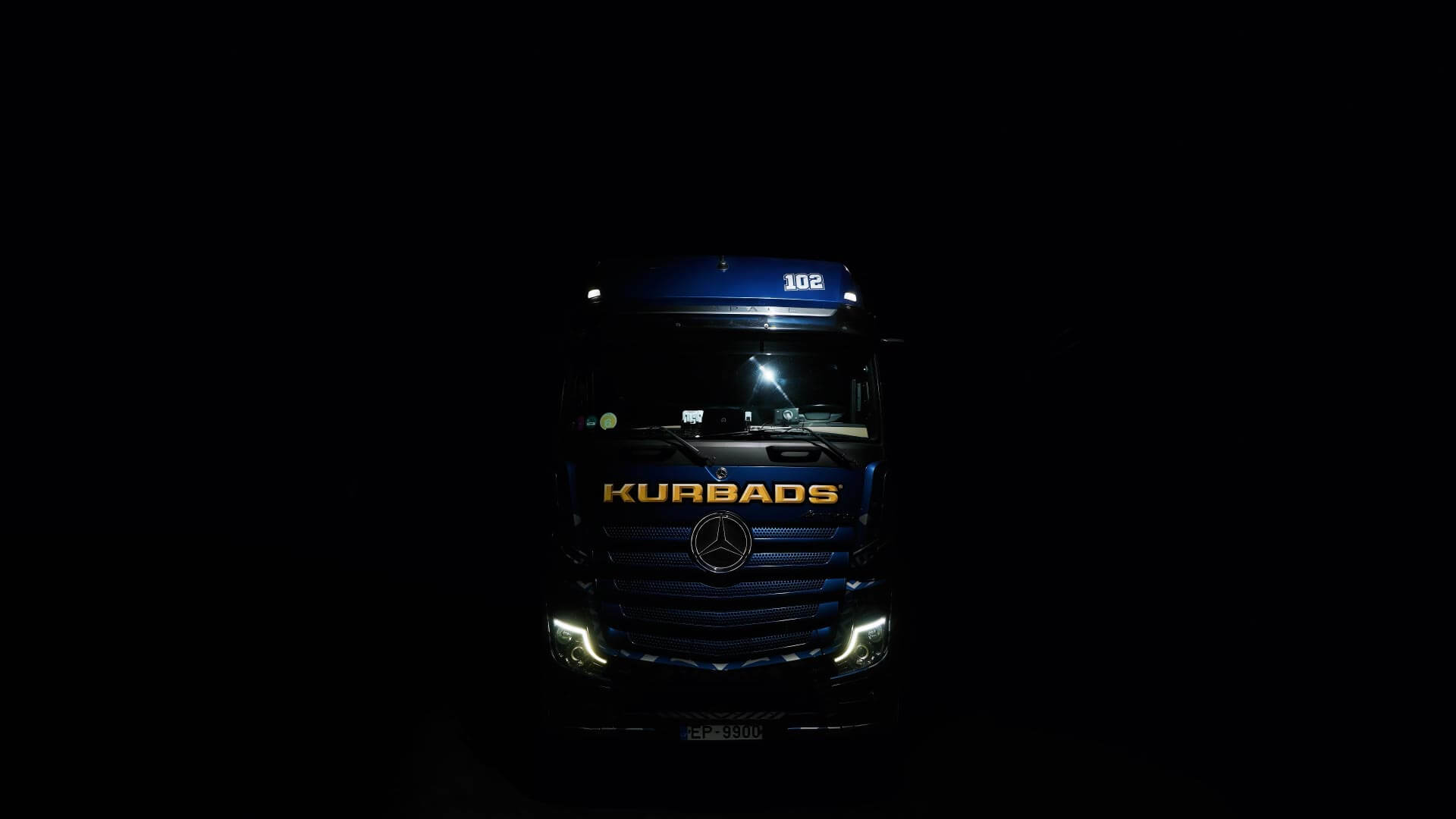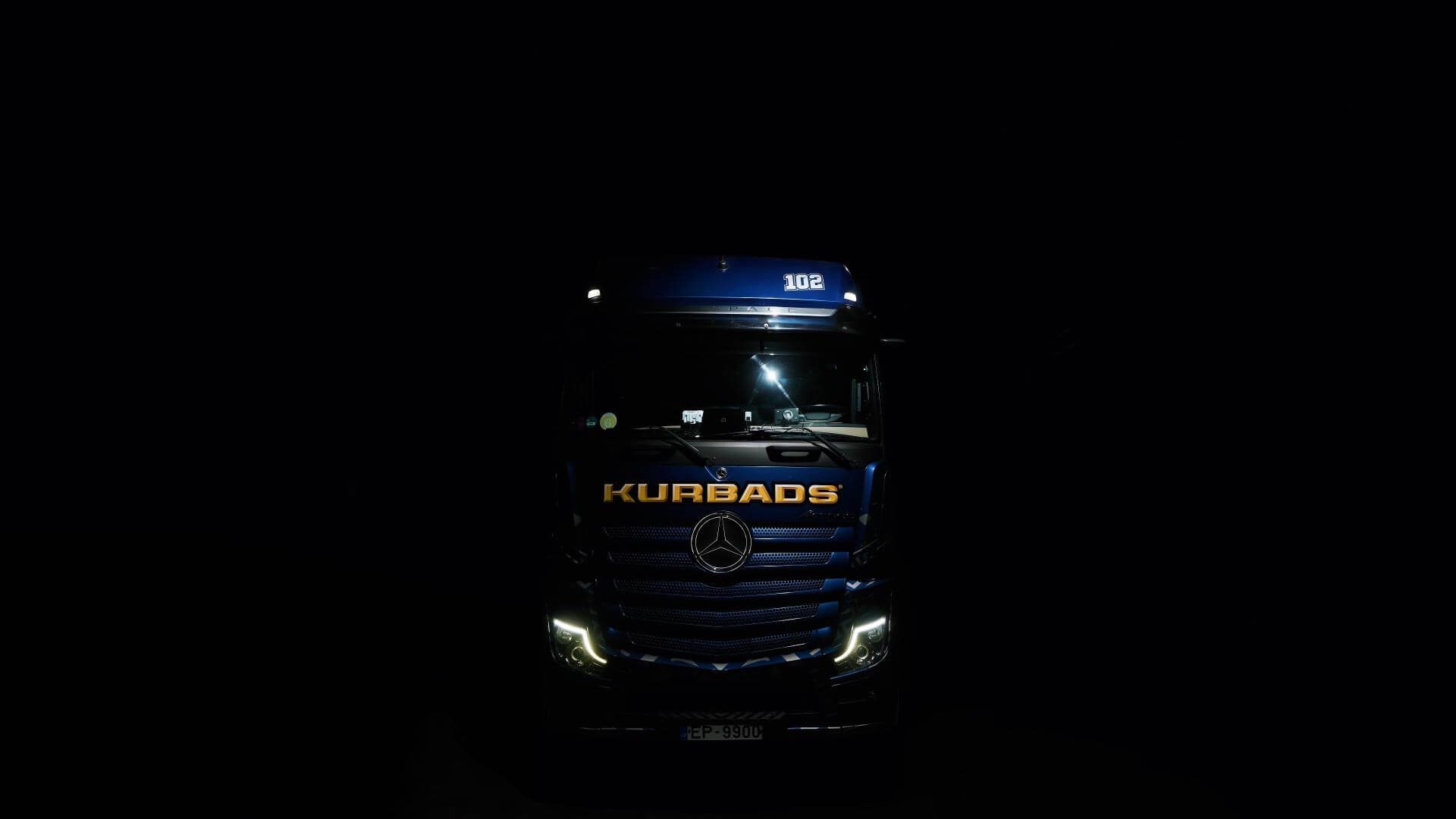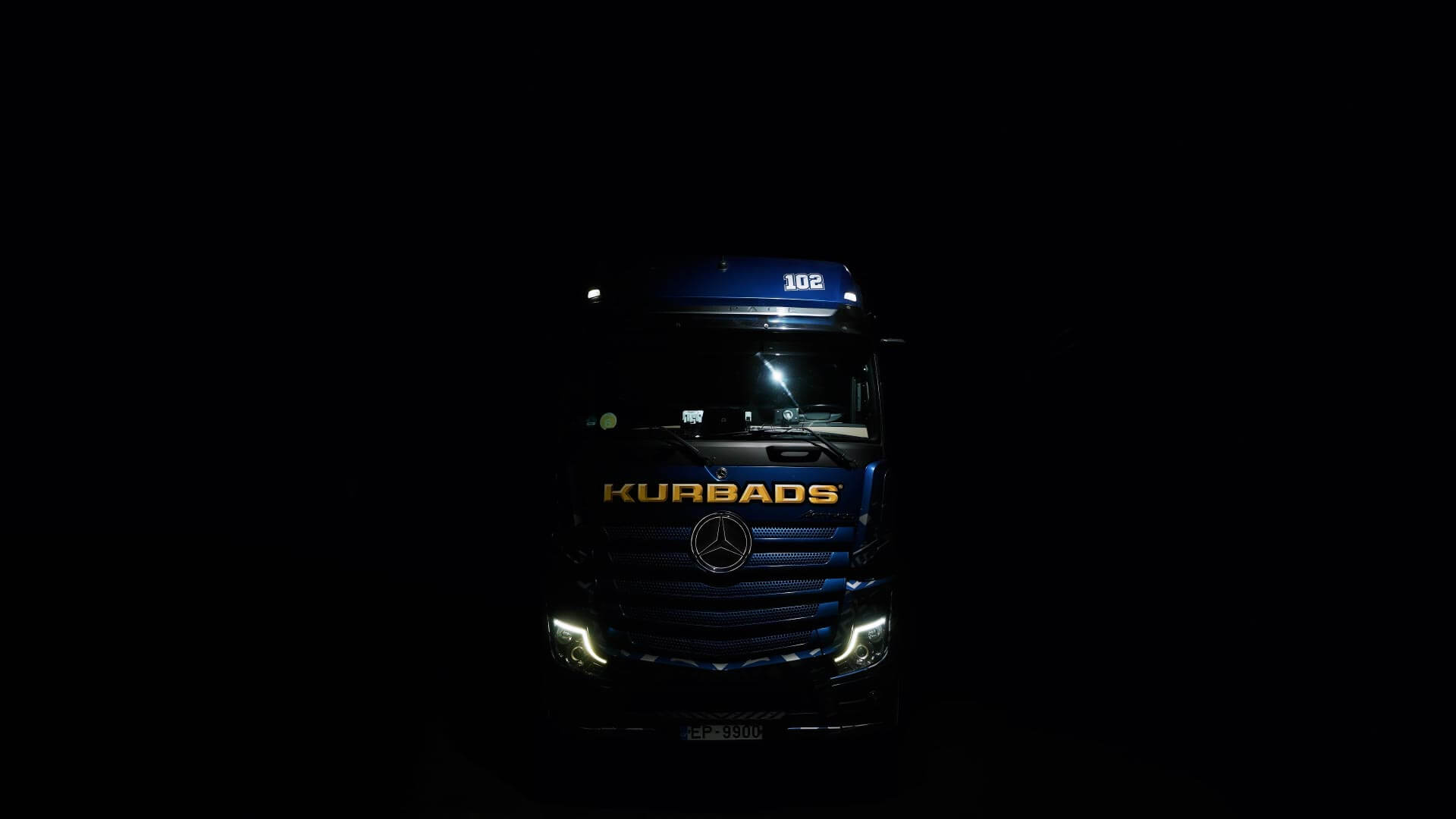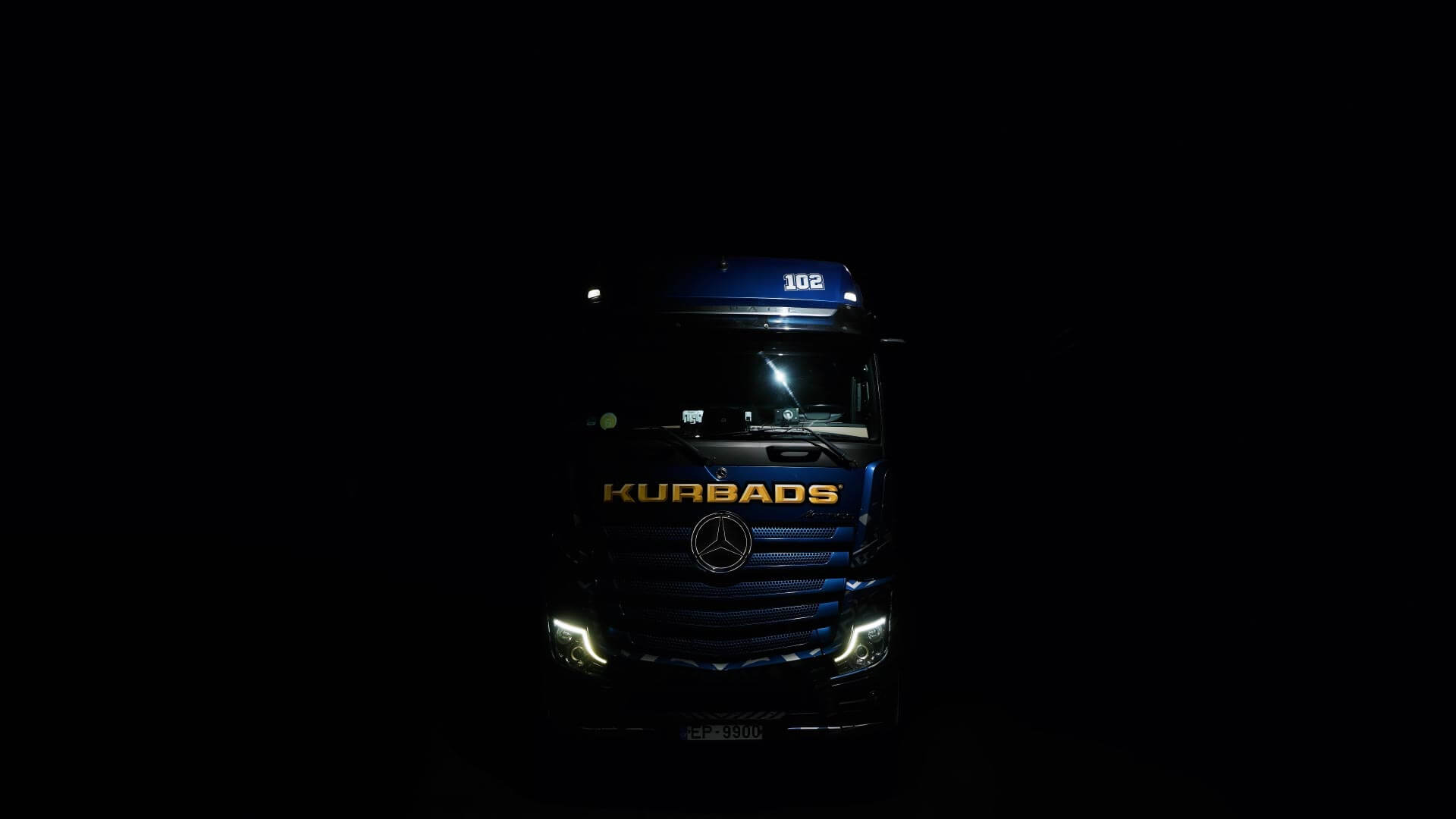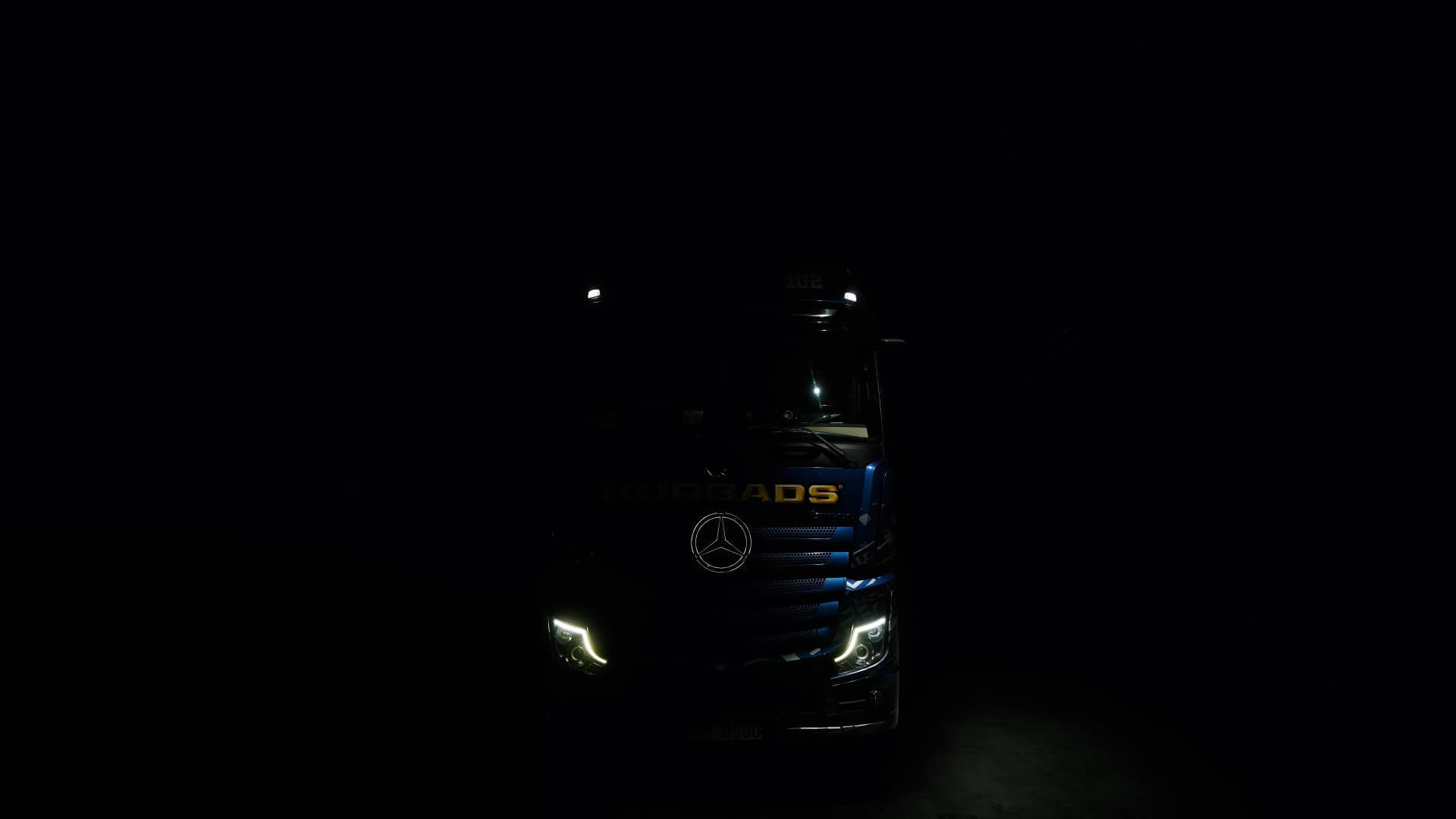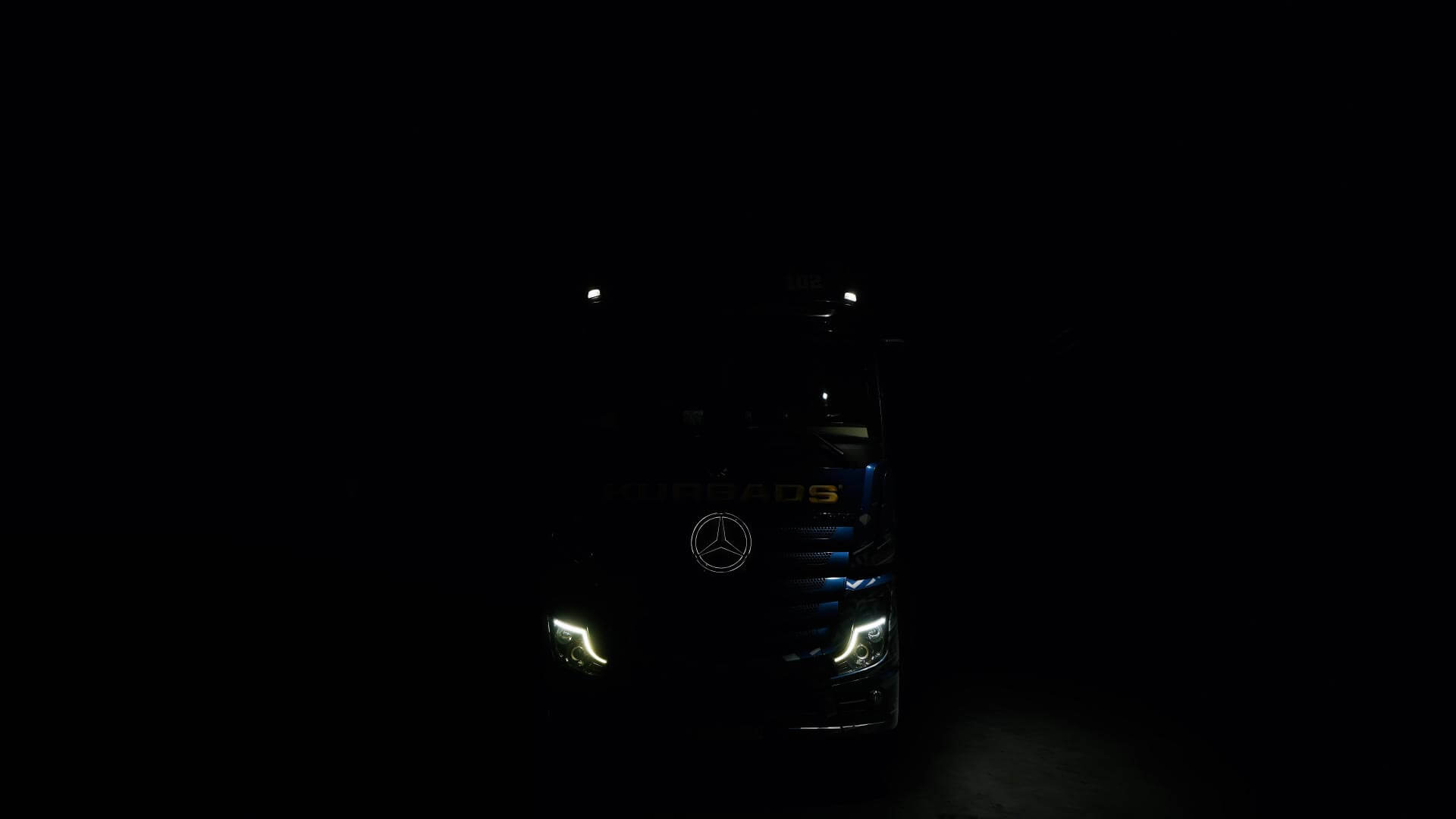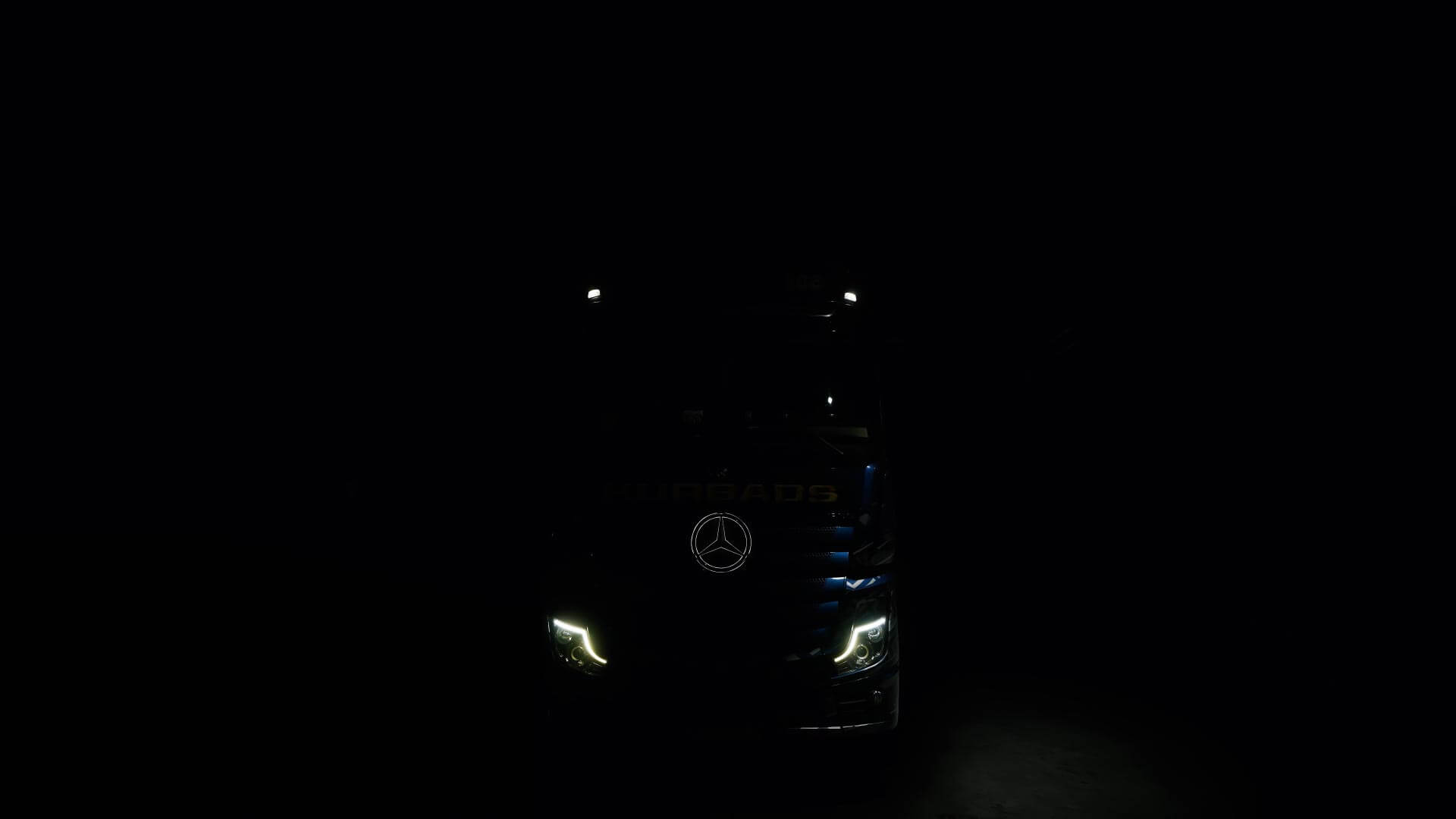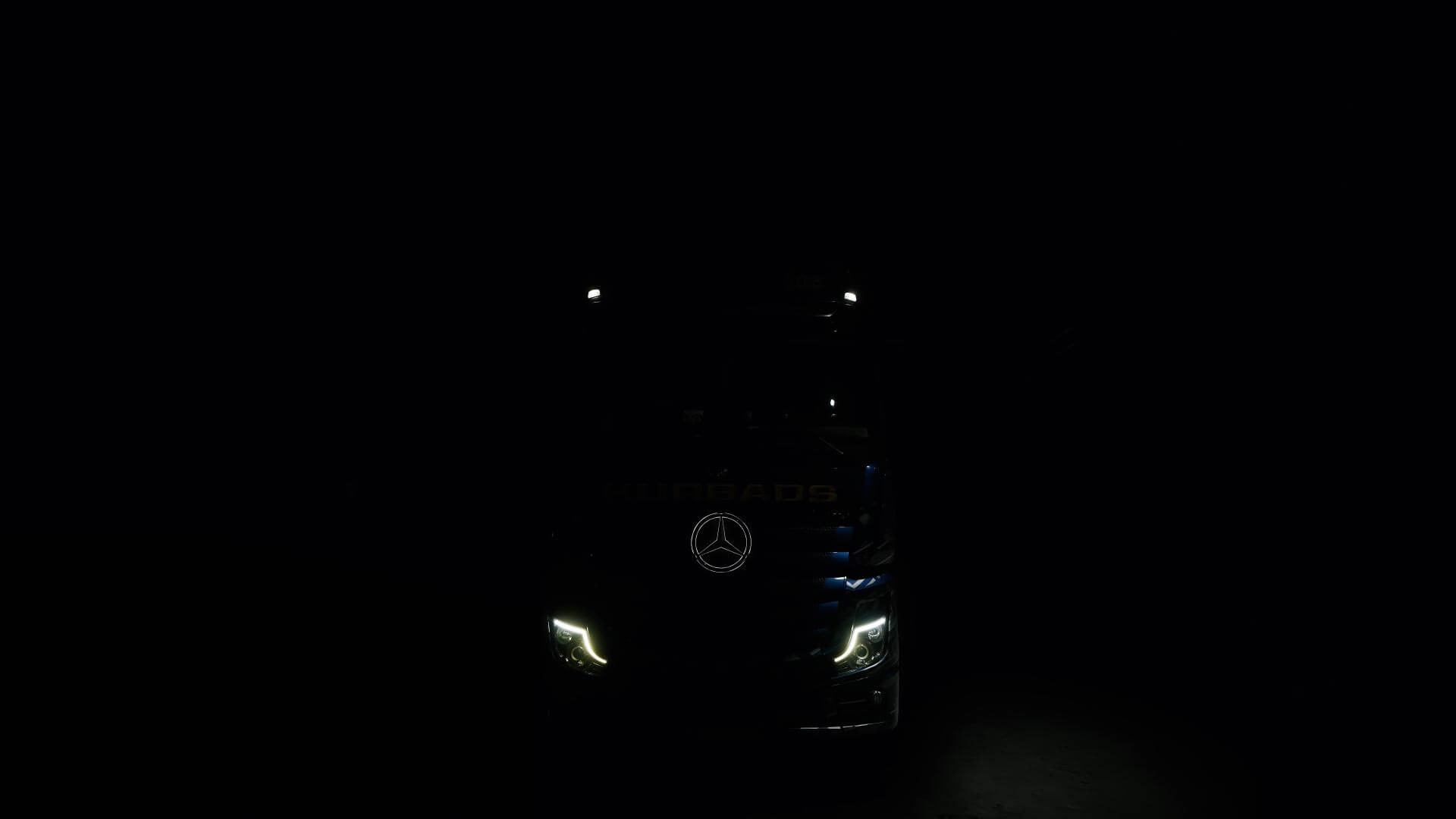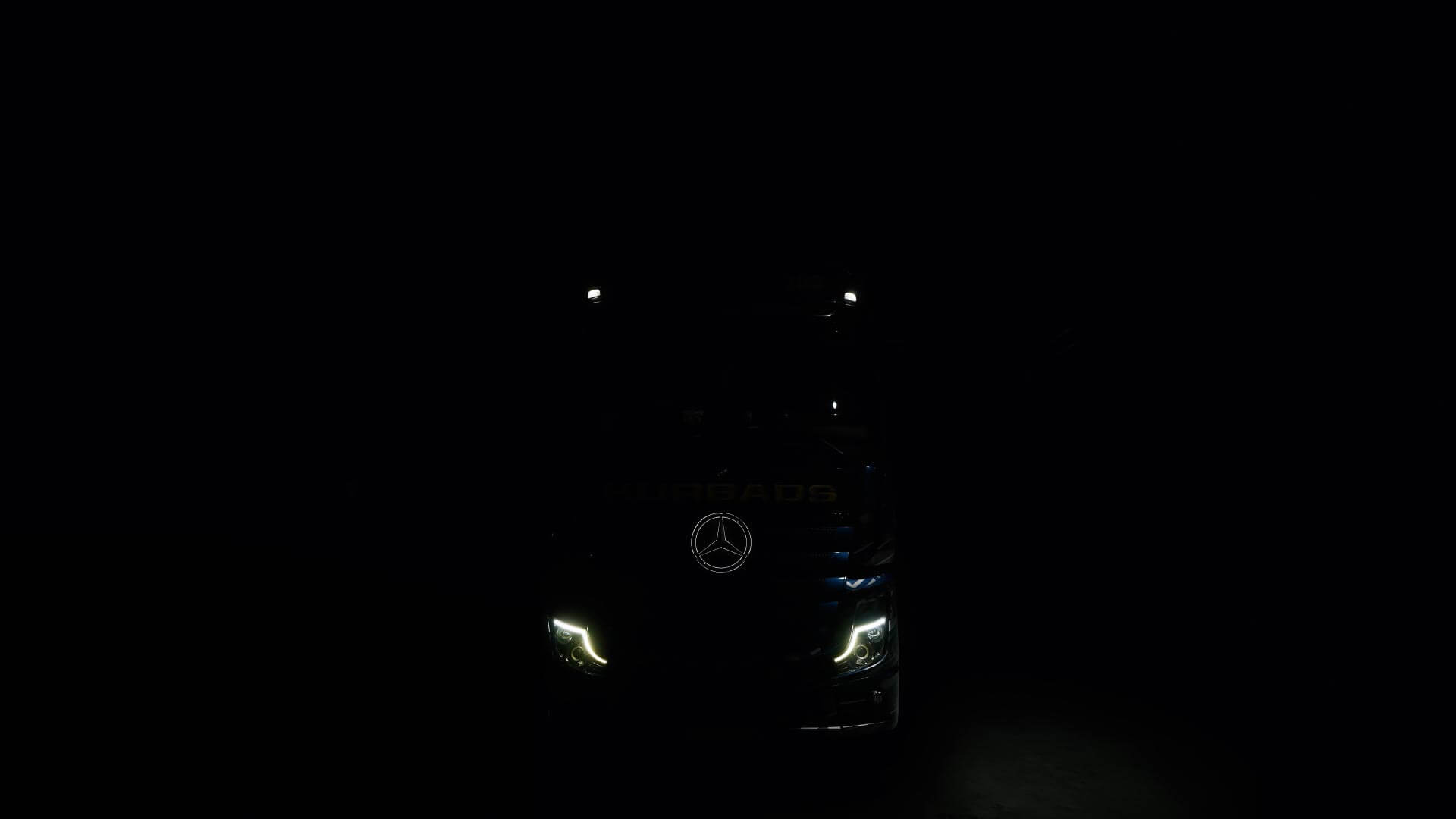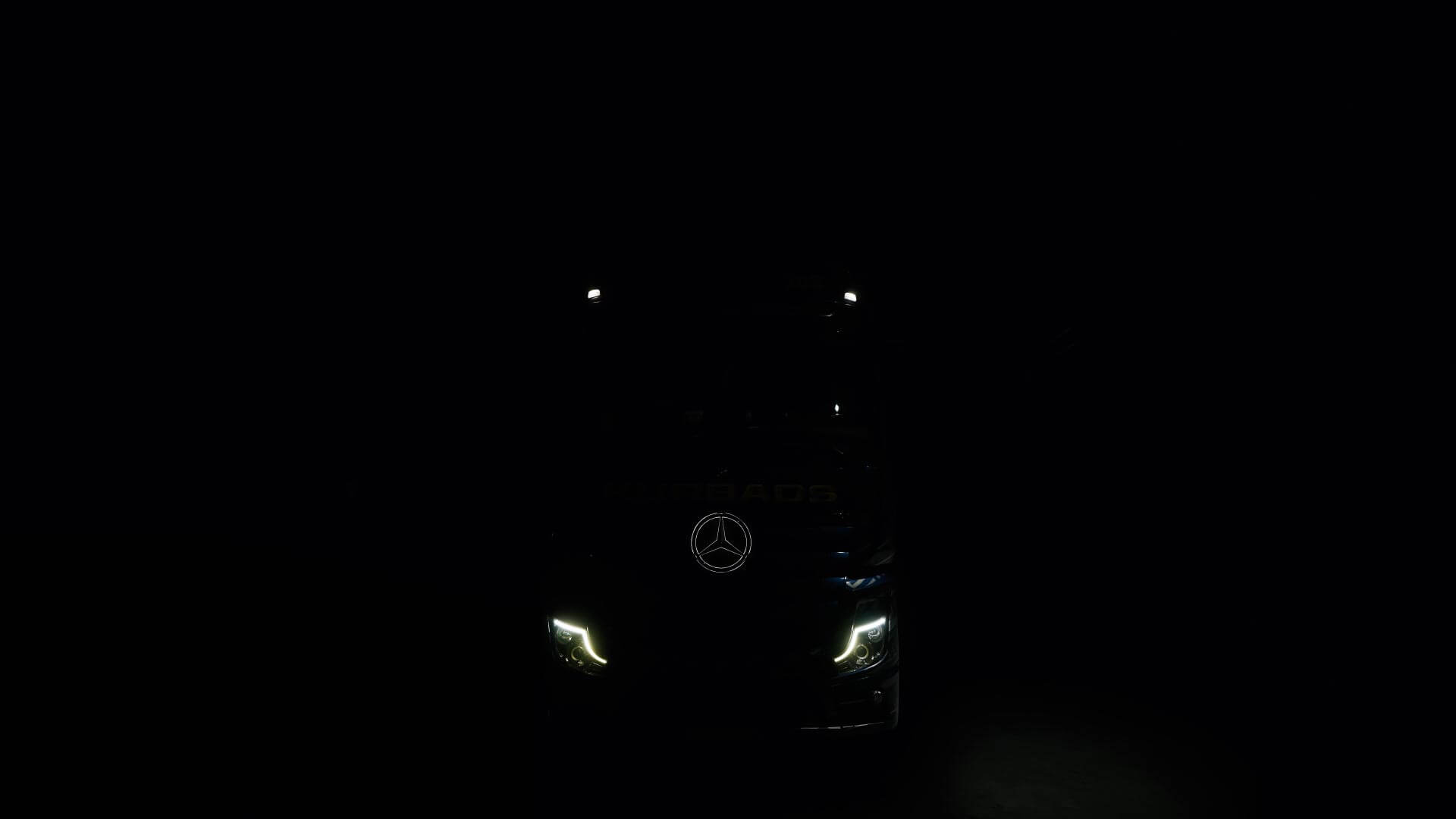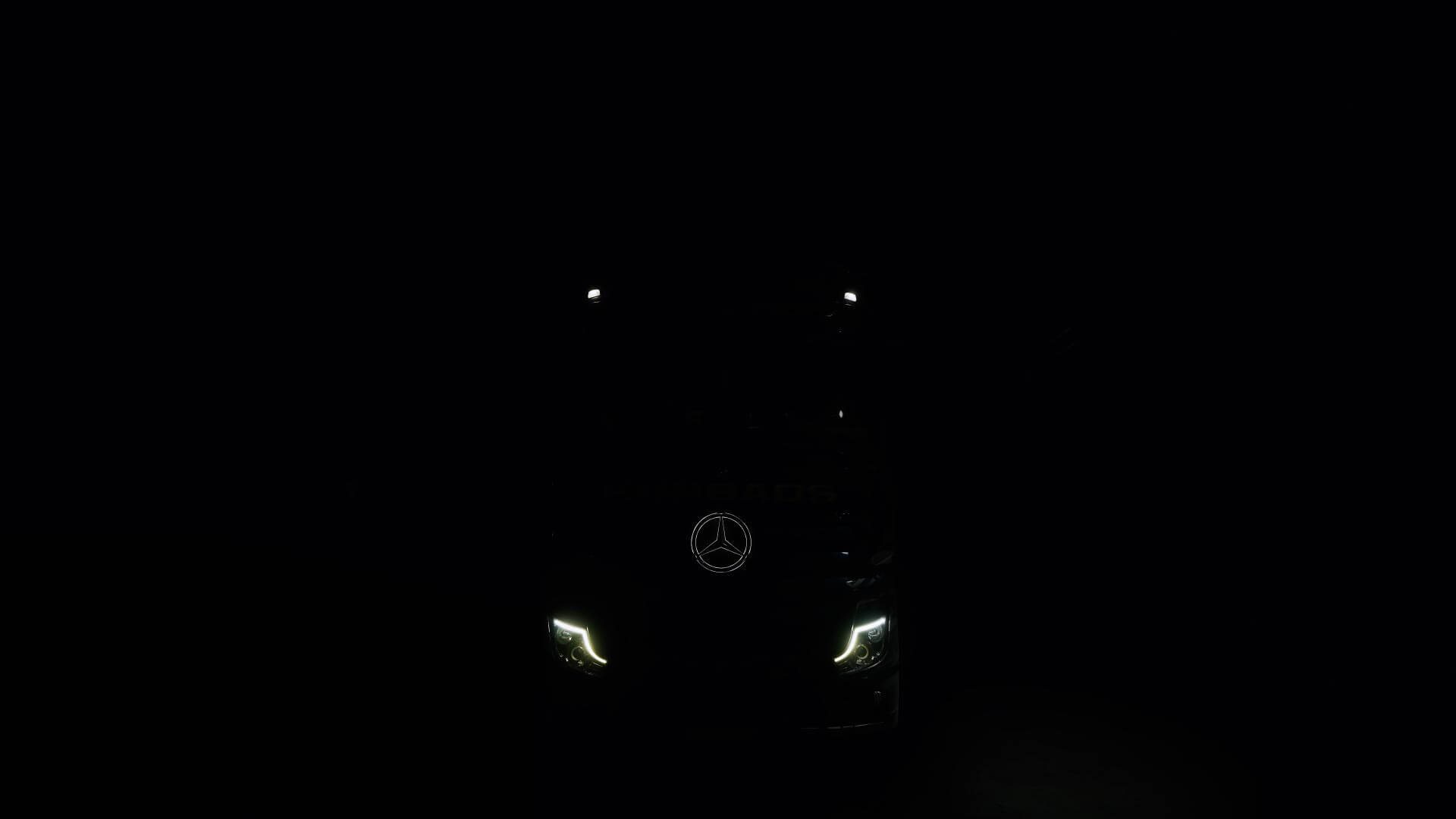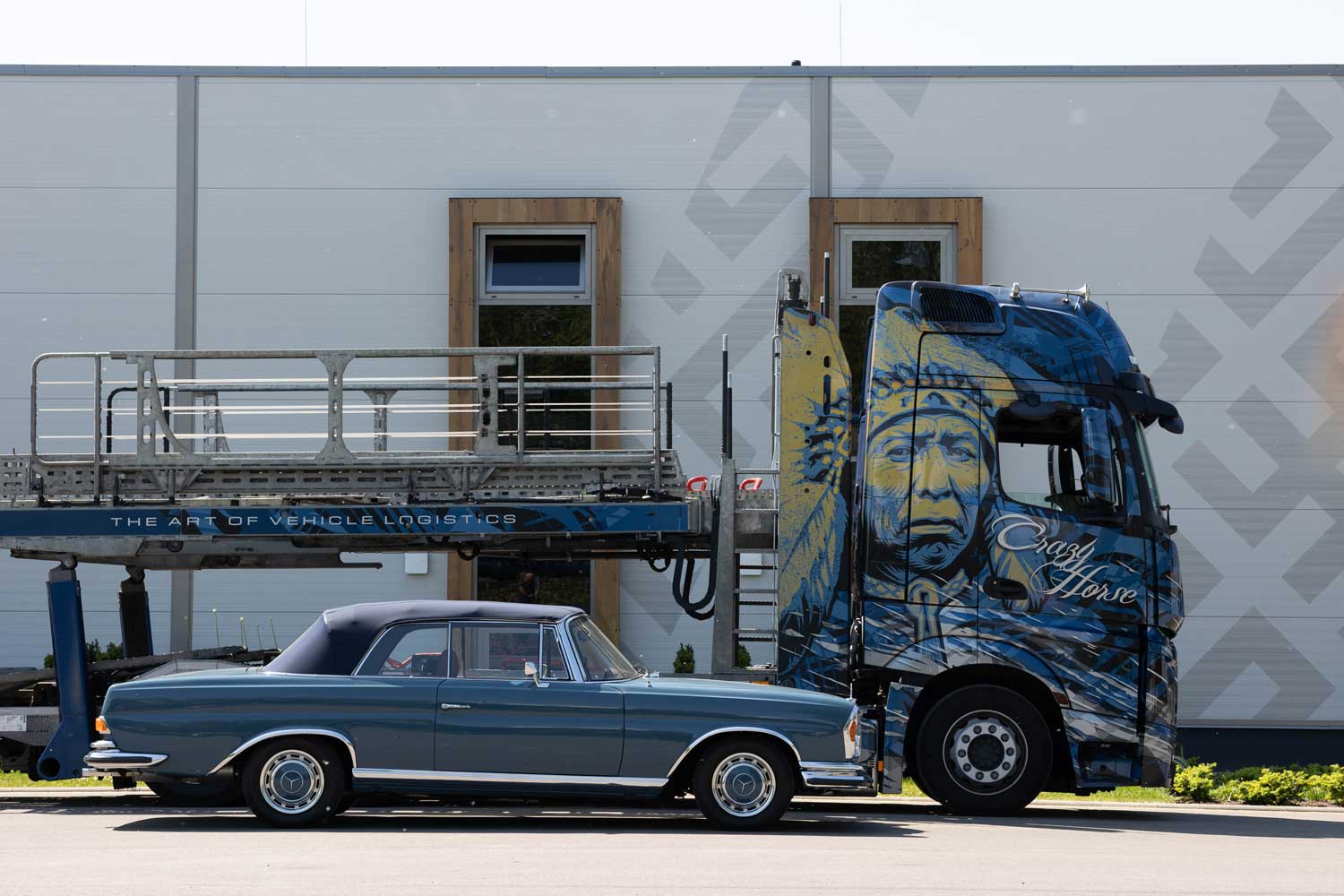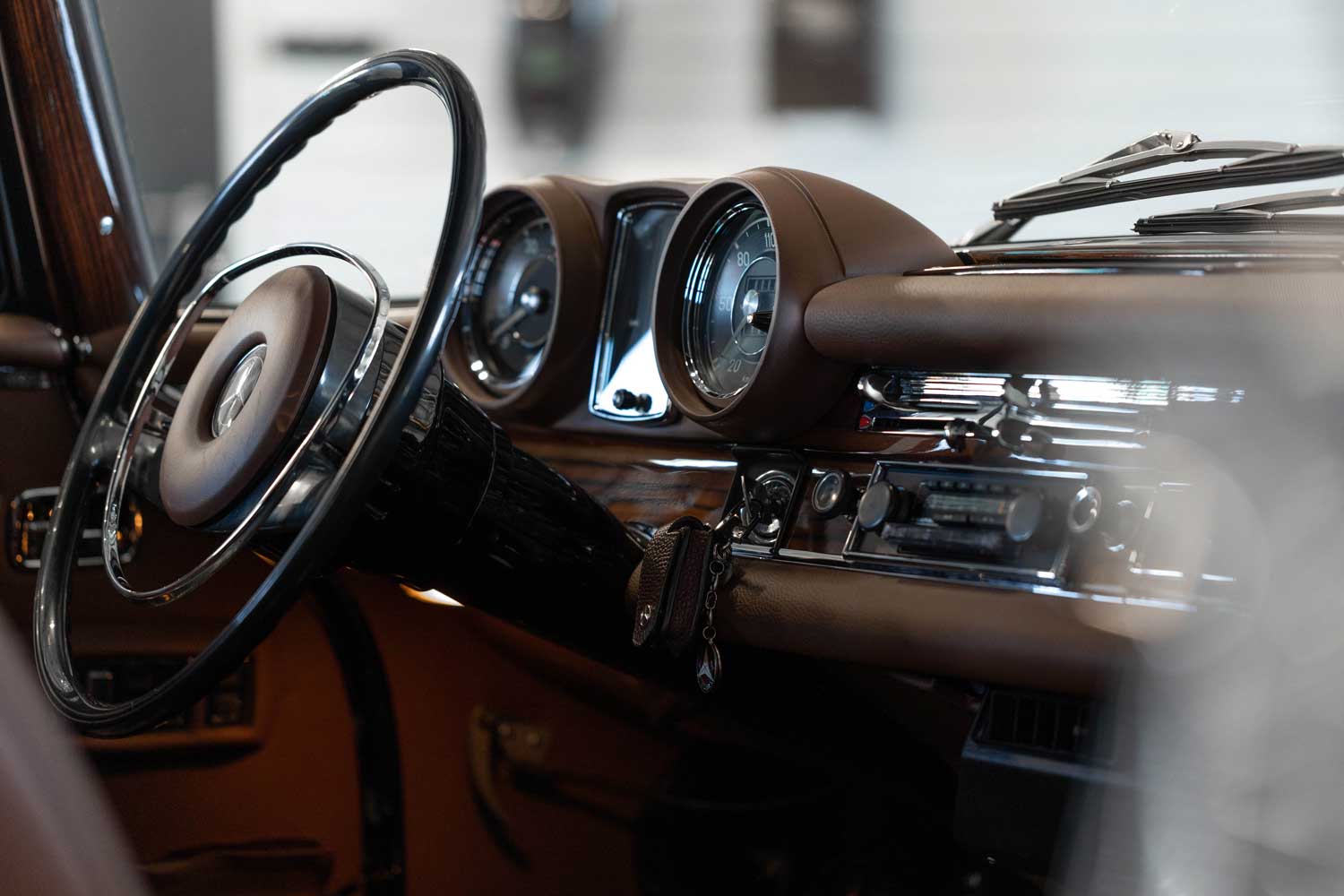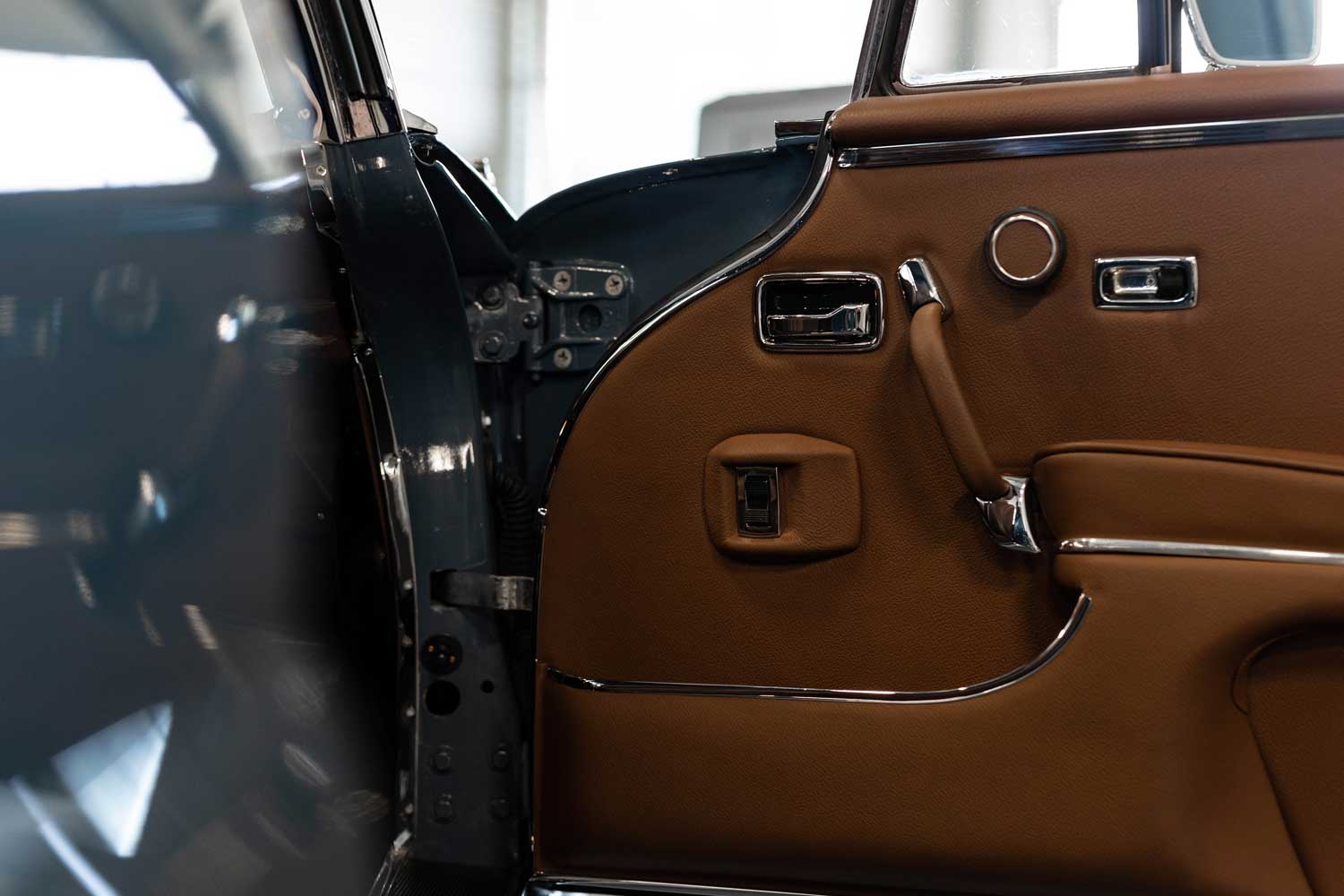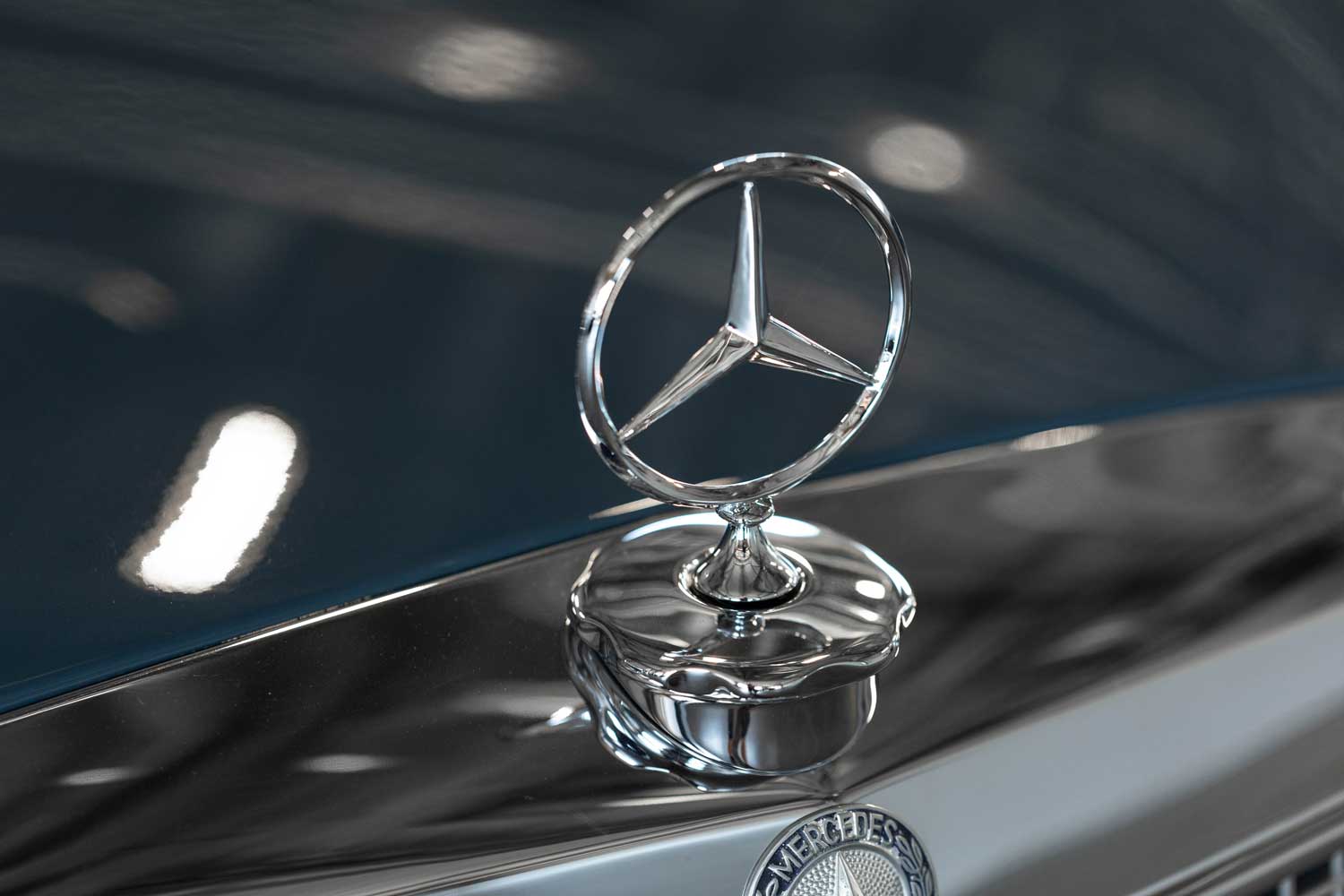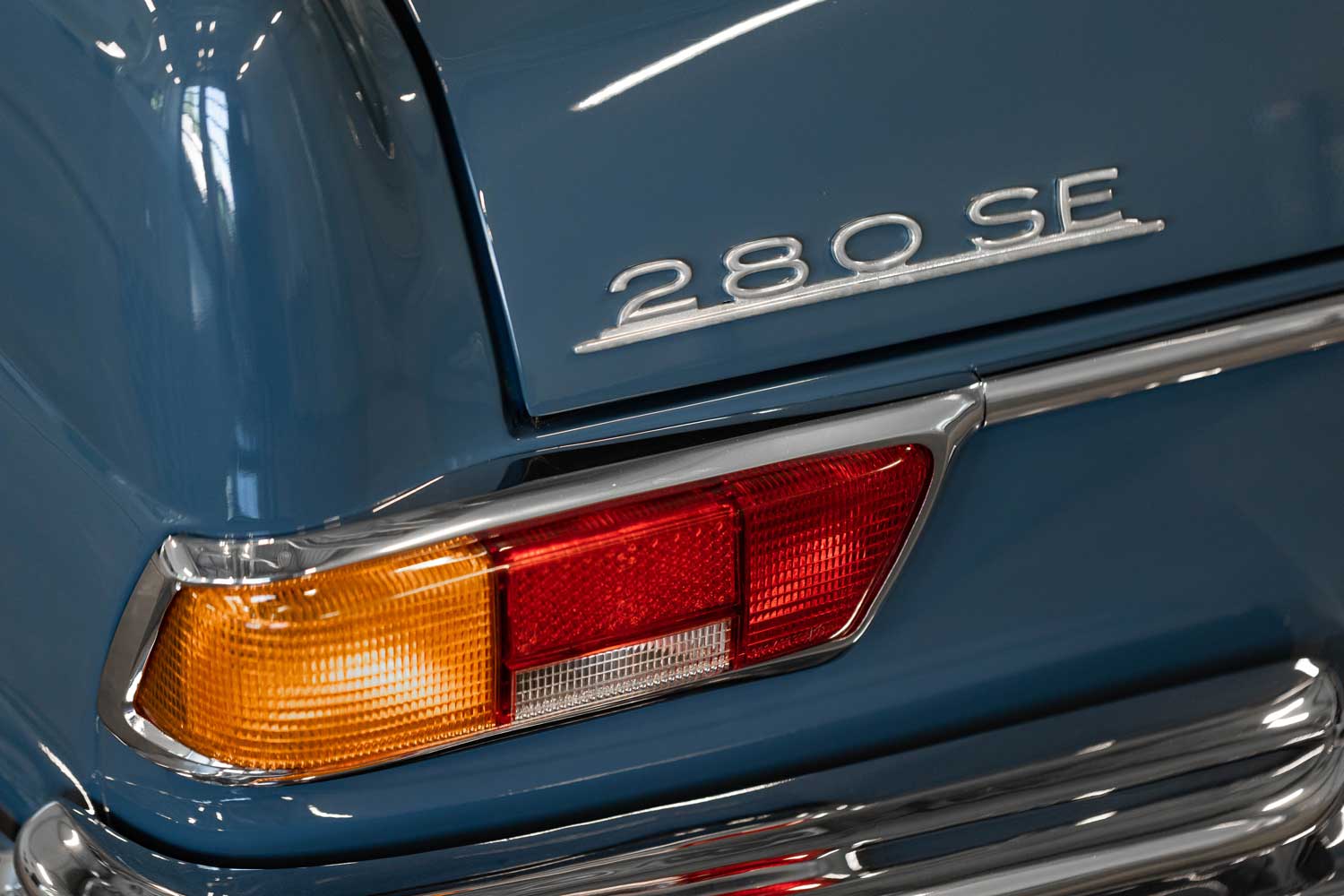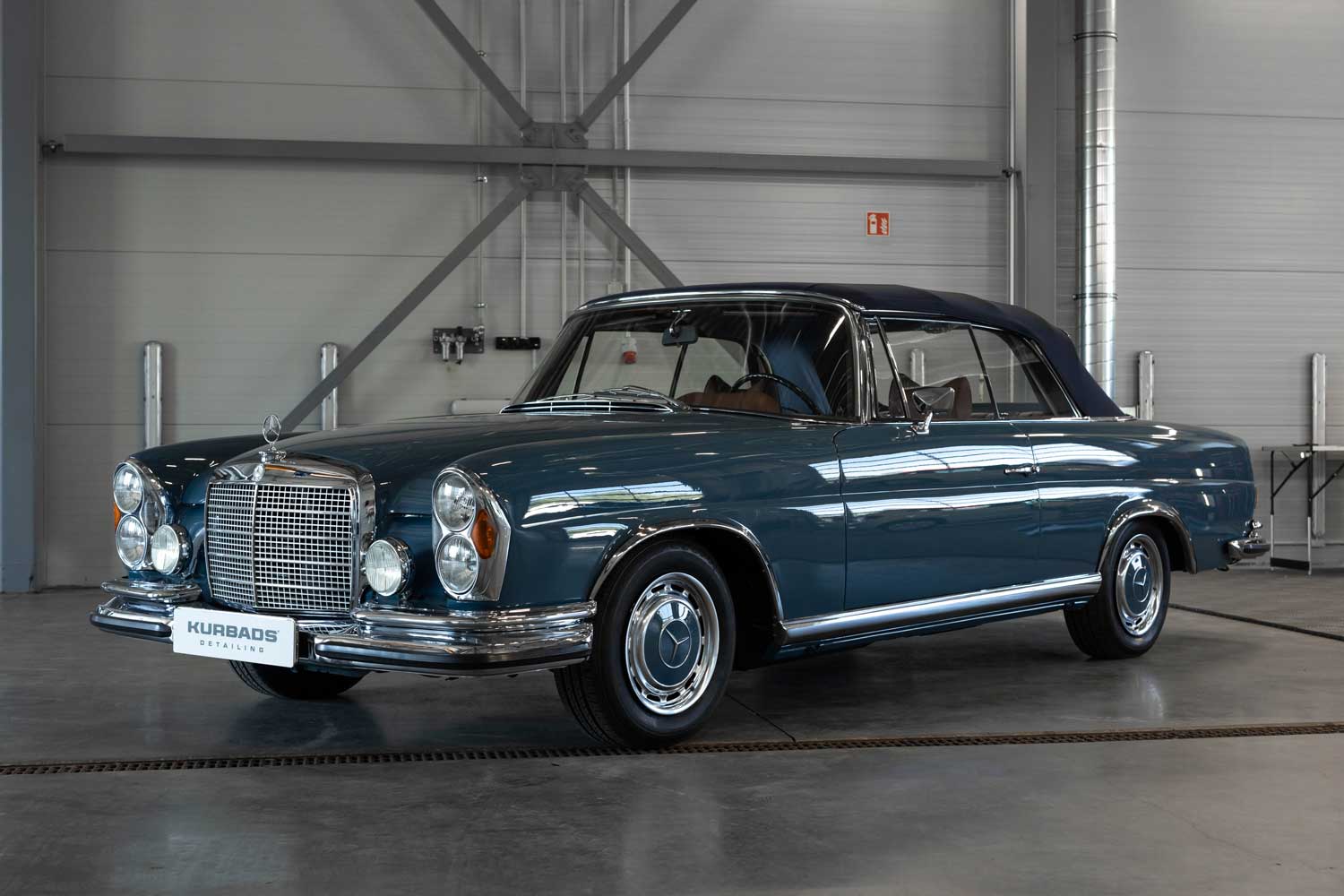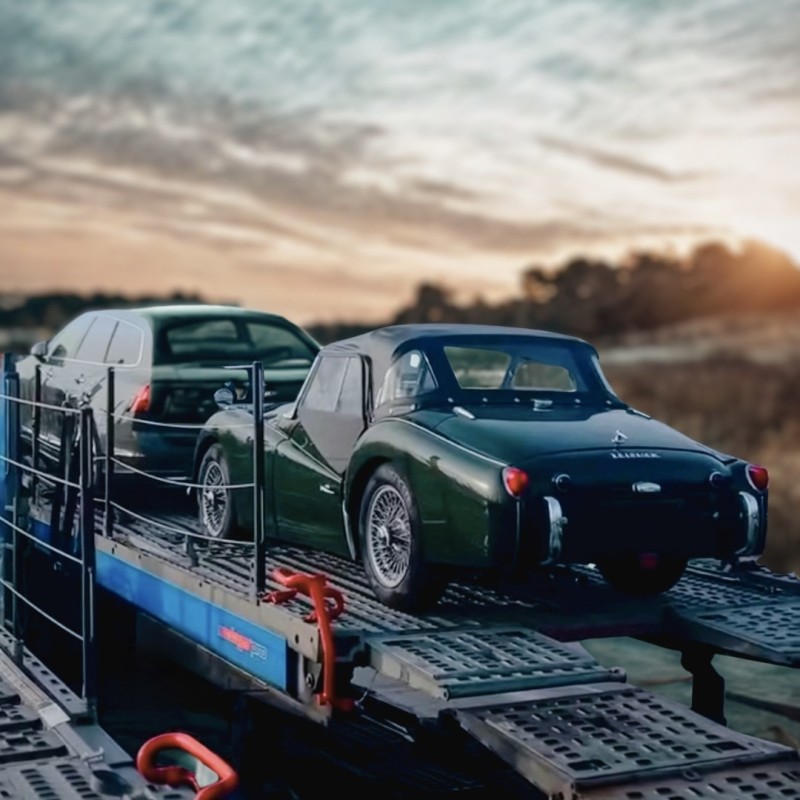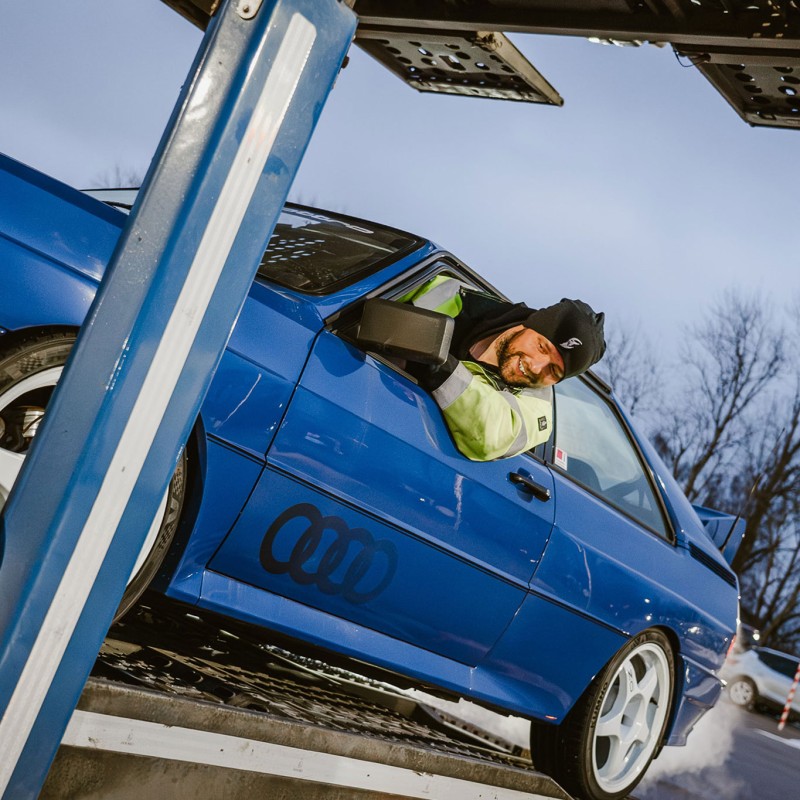Ponton Heir – The Iconic Mercedes Benz 280SE

Good-looking two-doors have always succeeded at catching the eyes of car enthusiasts and making collectors want to get them. Historically, the best two-door cars have stood out not only for their visual design but also their comfort and the technologies used. The 280SE is the model that decades ago, started the tradition of Mercedes Benz building spacious, luxurious, and beautiful two-doors.
It is almost symbolic that the sleek 1960s convertible shown in the photos next to the Kurbads Crazy Horse car hauler is blue. Although the W111 series two-door vehicles also came in other colours, it is the 1968 Blau Coupe, or in this case the Blau Cabrio with its slightly darker, matching roof, that is considered an especially elegant combination. Mercedes-Benz kept making this model for ten years, from 1961 to 1971, and it is not only remarkably beautiful and sought-after but also holds a special place in the transformation of the brand’s line-up.
With a hard top or without it, the two-door Mercedes of the W111 generation is an undeniably gorgeous car whichever way you look at it. After the Second World War, Mercedes-Benz’s model range consisted of various generations of so-called ‘pontoons’ (or ‘Pontons’ in German), relatively small passenger cars marking the technological transition to an integral body, as well as ultra-premium framed-body limousines, including the one popularly known as ‘Adenauer’, referencing Germany’s first chancellor Konrad Adenauer, whose fleet once included as many as six Mercedes-Benz W189 model 300 (1957–1962). The ‘pontoons’ got this name because of the one-piece look of their body and were the safest cars of their time thanks to the work of the engineering genius of Béla Barényi. However, with time, they became too cramped and not comfortable enough to meet the rising expectations of buyers and their ever-growing incomes. Production of the new model began in the summer of 1959, while its premiere, which only featured six-cylinder engines (the ‘pontoon’ also came with a four-cylinder option) took place in the autumn of that same year at a car show in Frankfurt. The advantages of the W111 were evident in comparison to even the most expensive ‘pontoon’, the W128; however, the series lacked a vital component: a real luxury coupe.
Two doors, four seats
By the end of its career, even the ‘pontoon’ got coupe and convertible versions, which were actually pretty good-looking, too. But technological constraints made the rear seats in them virtually rudimentary. A deficiency like that did not fit well with Mercedes’ new ideology of absolute comfort, largely based on a commitment to build an exclusive car with two doors and four full seats. There was also some worry about giving the saloon body a sportier look, as the W111’s designer Karl Wilfert designed the boot section of the base model to have pronounced vertical fins at the edges, which is why the first 220b and related models became known as ‘Heckflosse’ soon after their launch. This German word means ‘tail fin’, or ‘fintail’. In its internal communication, Mercedes referred to these fins as ‘Peilkante’, ‘directional edges’, but conservative customers rejected the design anyway at first, considering it too ‘cool’. Later, the feature became a visual staple for this generation of models. Following the more powerful and beautiful W111 and W112 models, the letter ‘S’ appeared in their names, standing for the German ‘Sonderklasse’ or ‘special class’. So, this Mercedes-Benz model laid the foundations for the coming S-Class series.
Without fintails
But how did the coupe get its timeless design? Now it’s time for us to talk about the work of the legendary French car designer Paul Bracq. During his compulsory military service in the mid-1950s, he had a chance to present his sketches to Wilfert, who was so impressed by the French talent’s ideas that he immediately offered Paul a job at the Mercedes design studio in Sindelfingen. Paul’s military service held back his career at Mercedes it coincided perfectly with the work on the W111 and W112 (a more luxurious version of the W111 with air suspension and a bigger engine) coupe and convertible versions. The two-door models came out in 1961, two years after the saloon’s premiere. The presentation of the coupe took place exactly at the time of the anniversary celebrations of the Mercedes-Benz Museum, while the convertible model first appeared at the car show in Frankfurt that same year. Bracq not only almost completely removed the fintails, but also decided to do away with the car’s middle, or ‘B’, roof pillar. For a 4.9-metre limousine with long doors, this was no easy task, but it cemented Stuttgart’s approach to designing coupes and convertibles for decades. The generous glazing, borrowed from large American coupes, filled the luxurious interiors with light in any weather and underscored the principle that had been in place since the late 1950s: coupes and convertibles must be as comfortable as an S-Class, except with two doors. In 1965, the fintail also disappeared from the saloon, and three years later, the saloon itself gave way to a new S-Class generation, the W108/109.
Mostly with automatics
The two-door versions outlived the original by a whole three years, and the convertible shown in the pictures represents that period of maturity. The 1968 280SE replaced the 250SE, offering a newer M130 series 2778 cc 6-cylinder engine with 160 hp. This shaved off a second going from 0 to 100 km/h, down to 10.5 seconds, with a manual gearbox. For models with a four-speed automatic, it was 13 seconds, but at the time, Mercedes S-Class coupes were not about speed but rather timeless elegance. Also, in the 1970s, the US was the most important market for Mercedes-Benz’s large models, and the cars that went there were, of course, only equipped with automatics. The manual gearbox versions were only sold in Europe and, because of that, are extremely rare.
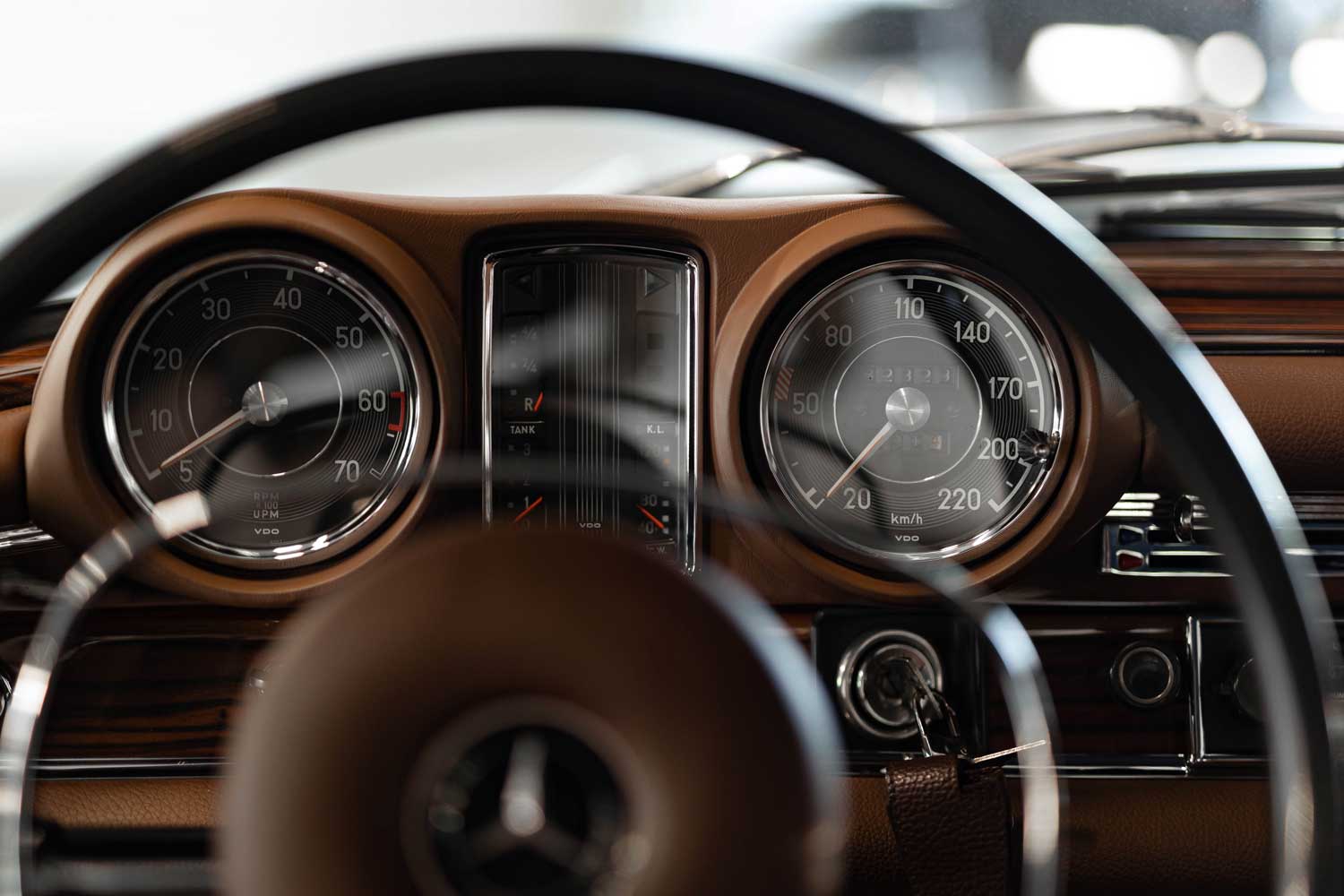
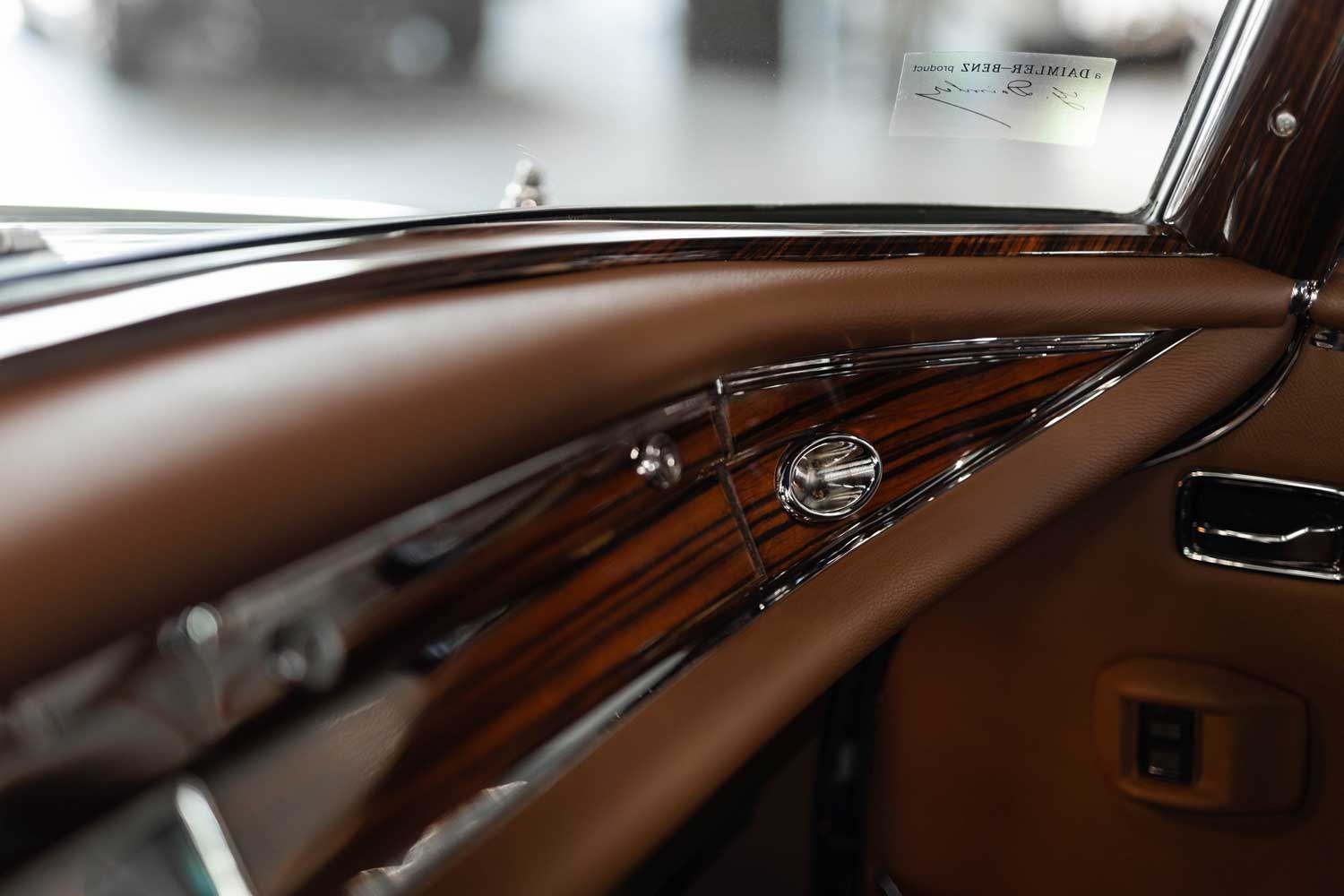
Interestingly, 14-inch tyres were enough for a car with such a distinctive presence at the time, while the ground clearance was a respectable 17.5 centimetres, more than some modern crossovers! In addition to the new engine, the car got one-piece decorative wheel plates of the body colour, new mirrors, and an updated dashboard. The unique combination of the meter dials with the slightly elevated clock-like top still looks chic enough today, and a high-quality leather and matching wood finish were a must-have, even back then. Another interesting point is that the W111 originally had a dashboard with vertical dials, which made it look a bit silly, although it was undeniably innovative. Traditional, round dials only came later. The coupe/convertible versions of the W111 series eventually achieved such perfection and grew such a reputation that it is sometimes not the chronologically appropriate C107 that is considered its worthy successor, but the well-known W126 S-Class coupe, which came out in 1981, ten years after the end of the Blau Cabrio.
Assembled by hand
The timeless design, elegance and outstanding quality of the Mercedes-Benz W111/112 series two-doors make them highly desirable, not least because its entire generation is the last of the ‘hand-made’ Mercedes. Although manual labour accounted for only some of the production process, the factory output for these vehicles was really tiny: Mercedes produced cars like the one in the pictures at a weekly rate of only 13. Looking from today’s perspective of conveyor lines that assemble a new car every two and a half minutes, a jeweller-slow manufacturing pace like this seems unbelievable. As a result, only 3797 coupes and 1390 convertibles were made in ten years. There is only one model that is in theory even rarer: the 250SE Cabrio, of which only 954 were made, as compared to 5259 of the coupe version, and doing a bit of maths shows that these were made at a rate of 48 per week. A total of 32,804 of the two-door models were made, with 7456 convertibles.
Beware of fakes!
Today, the eight-cylinder 280SE 3.5 models are the most sought-after. They look almost identical to the six-cylinder 280 but can cost up to three times more. There is particular interest in V8 convertibles, of which not a lot were made, only 1232, so coupes being turned into convertibles is not uncommon. Classic car websites even have guides on how to identify a fake, which includes checking the chassis number. In the case of the 280SE, the number must start with 111 025, and we are certain that the convertible at Kurbads’ facility is authentic. Like most classic Mercedes cars, the W111/112 was extremely popular in the USA, where the asking prices and condition of such vehicles can vary considerably. However, bear in mind that merely a nice, running Mercedes-Benz 280SE will cost 30 to 50 thousand euros, while a car in good condition fetches 70 to 80 thousand, if not more.





















